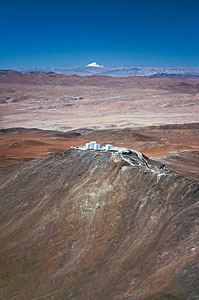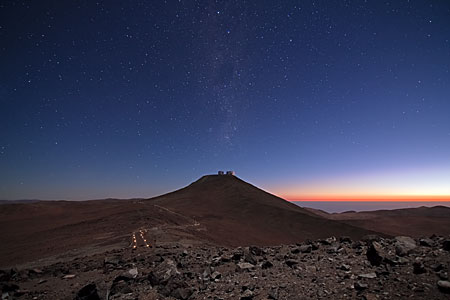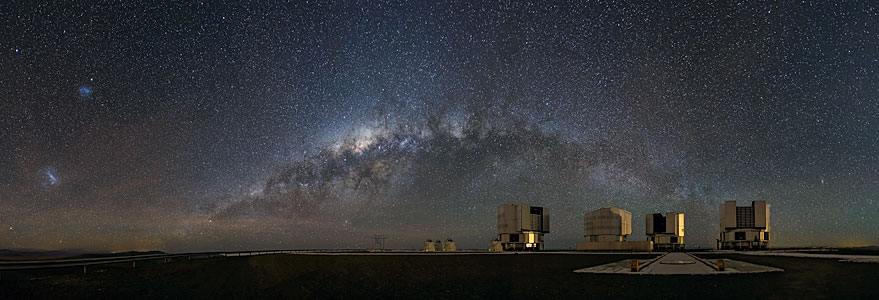NASA Socials are up and running gaaien after COVID-19. Even for non US residents. So subscribe to their mail list and try your luck
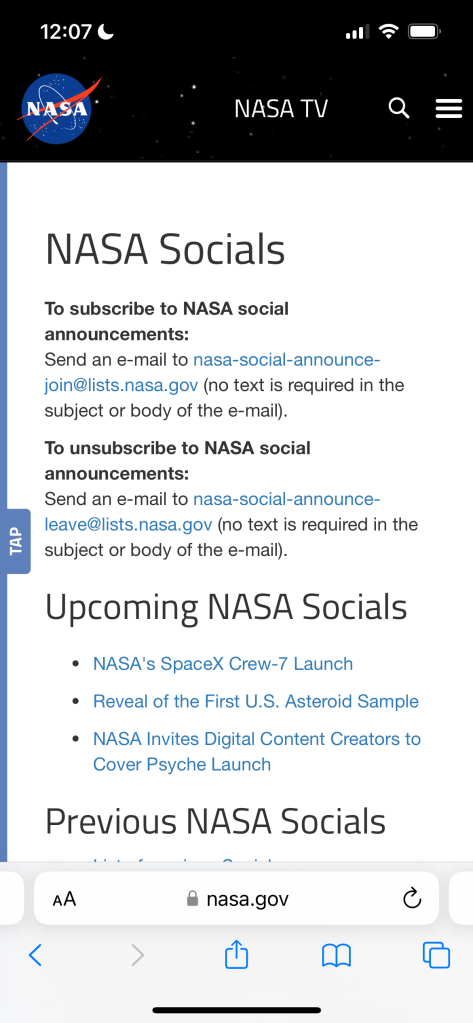
NASA Socials are up and running gaaien after COVID-19. Even for non US residents. So subscribe to their mail list and try your luck

I was one of the lucky few to have been invited to the SocialSpace event of ESA for the Aeolus launch.

The Aeolus mission is part of the Earth Explorers’missions of ESA designed to measure winds across the globe to understand winds better and most importantly of all to improve weather predictions. The winds are measured with a new invented laser which took years to develop. Aerosols were the key answer to the difficult task to develop this laser. Aerosols are dust particles or liquid droplets in the air. Aeolus is also a demonstrator for future wind missions. It’s a 3 year mission.
On the ESA website there’s a lot of information about the mission. Aeolus mission
The launch was planned for Tuesday evening (21 August 2018) on a Vega rocket from the launch site at Kourou (French Guinea). The evening before the launch we got an email that the launch was delayed because of high winds on the launch site! But the SocialSpace event took place anyway. There were about 18 people from different countries (Germany, France, England, Turkey, Venezuela, The Netherlands, Italy, Spain, Greece). We got to see a lot of interesting sites and rooms at ESOC in Darmstadt.
Earth Explorers Control Room
The missions which are led here are: Cryosat (ice and sea levels), Swarm (magnetic field), Sentinel and of course Aeolus. Copernicus was controlled in another room. It takes about 3 hours between sensing and releasing forecasts. The data us uploaded and downloaded from 2 stations in Sweden and Norway. The satellite is the most visible for those two norhtern stations.

Astronomy Missions Control Room:
GAIA, XMM, Integral (gamma ray). The GAIA mission is the most famous of these 3 missions. It has already mapped more than a billion stars. The Integral mission detected the collision of the two neutron stars which lead to the detection of gravitational waves. This led to an increased interest in ESA Science.

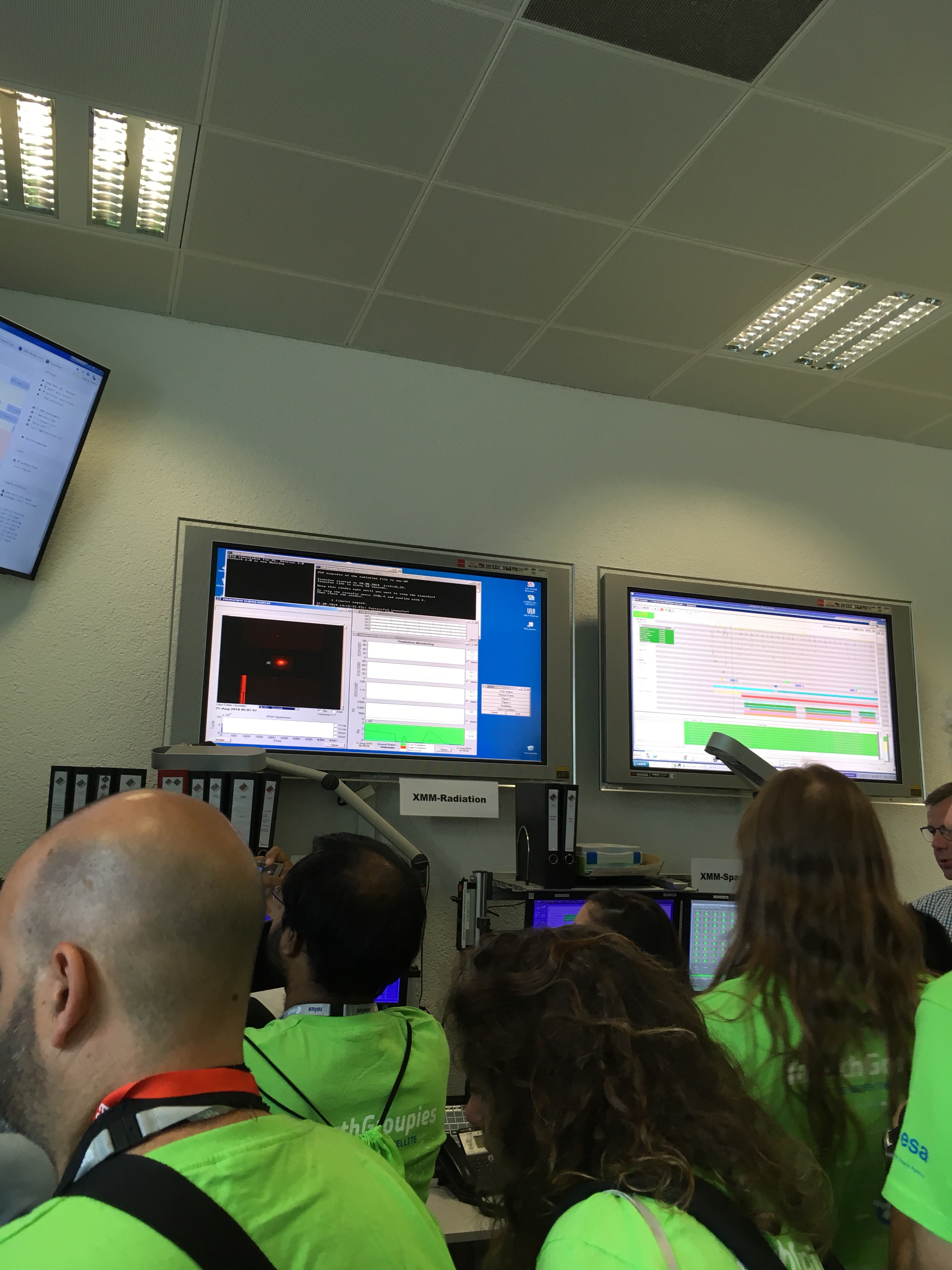
At Flight dynamics we got an interesting presentation about reaching the right orbit and trajectory of satellites. Aeolus will stay in a low orbit of 320 km. This causes more friction which leads to a height lose of 200m per week. So the satellite needs weekly adjustments of the altitude and uses more fuel therefore than the other Earth observation satellites (most at 600 km altitude).
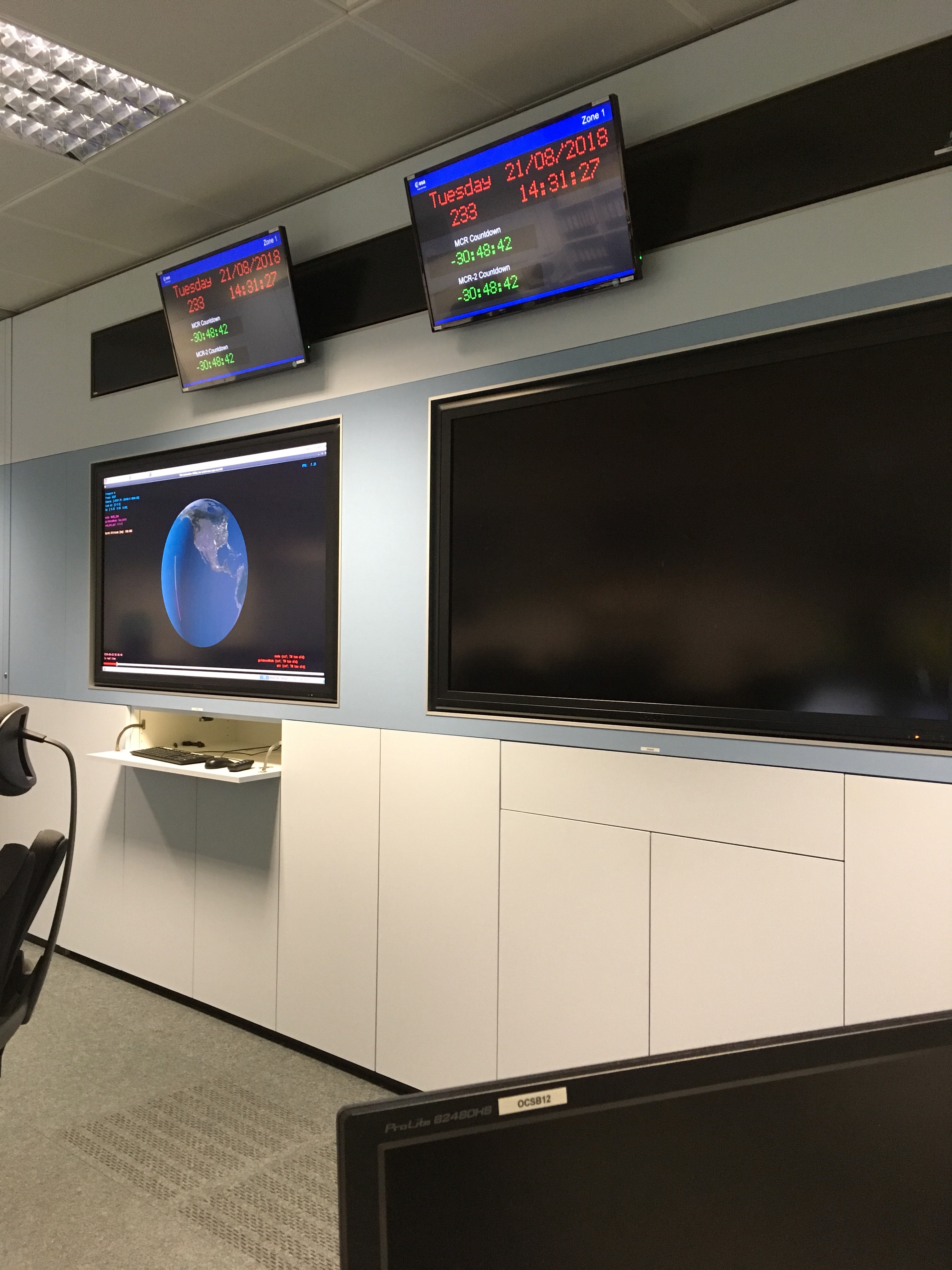
Planetary Missions Control Room:
Rosetta, Cluster, Mars Express, Bepi Colombo (which will be launched in October), Exomars, Solar Orbiter (future mission), Juice (future mission). These missions have long ground passes (as opposed to Earth Explorers). So the engineers plan commands to be send to the orbiters in advance. The next mission Bepi Colombo will use a couple of Venus flybys to reach enough momentum to reach Mercury. We also visited the Bepi Colombo Engineering Model at ESOC. It stood in Friedrichshafen since 2015 and was moved to ESOC a couple of weeks ago. They can use it for testing and troubleshooting. It has the same components and software as the real orbiter.
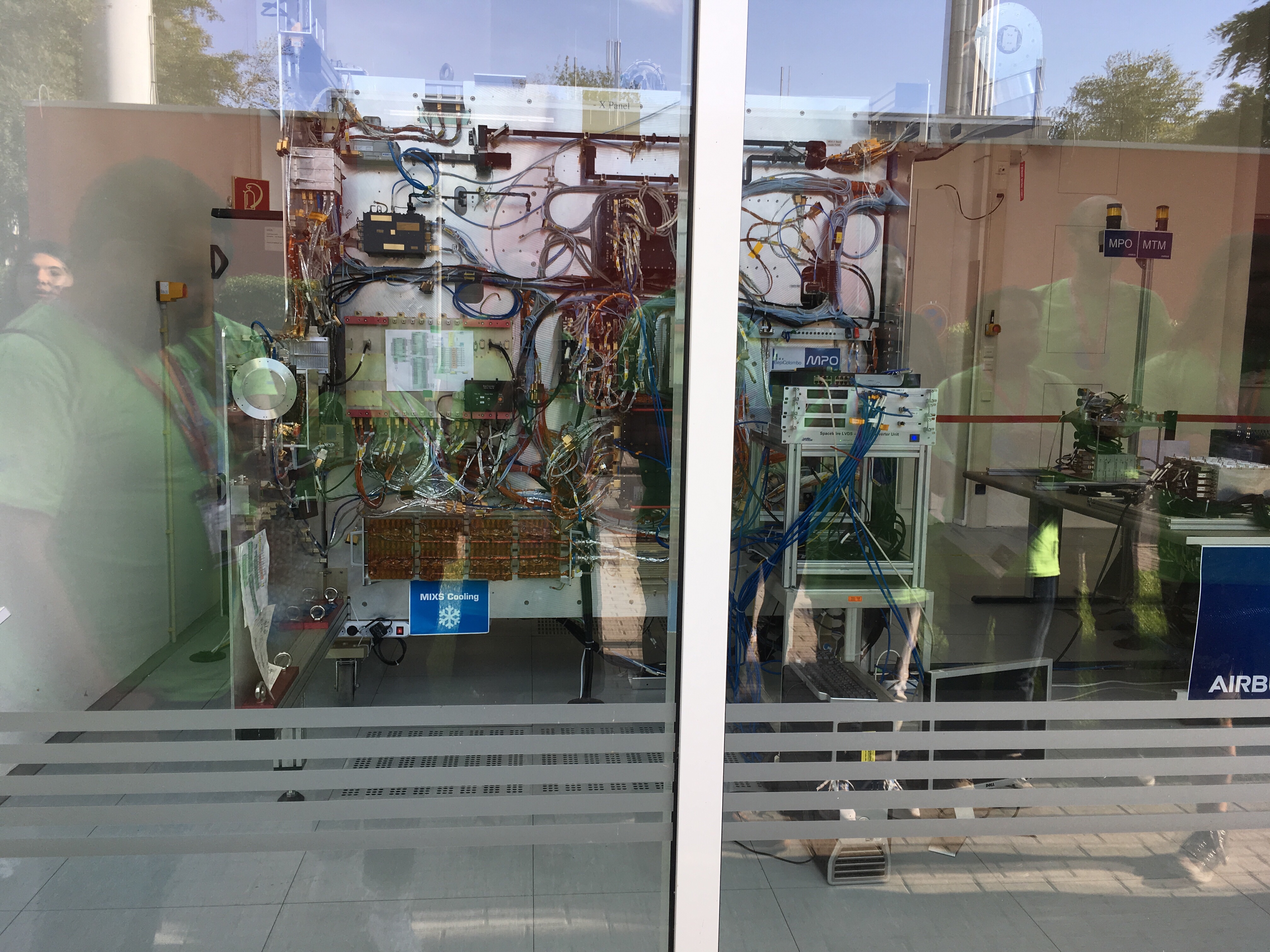
Space Debris office
There are 20,000 known pieces of space debris of about 10 by 10 cm by name and trajectory. It’s impossible to do this for the smaller pieces. Space debris can damage satellites and the ISS so it’s important what the chance is of a collision so they can react if necessary. There are two areas with the most space debris, the first around 600 km and the second one concerns the geostationary orbit (GEO; 36,000 km) where most communications satellites are.
This is a piece of solar arrays of the Hubble telescope which was hit by a tiny piece of space debris.


Flight Control
From here the satellite deployment and the first days after the launch are monitored.


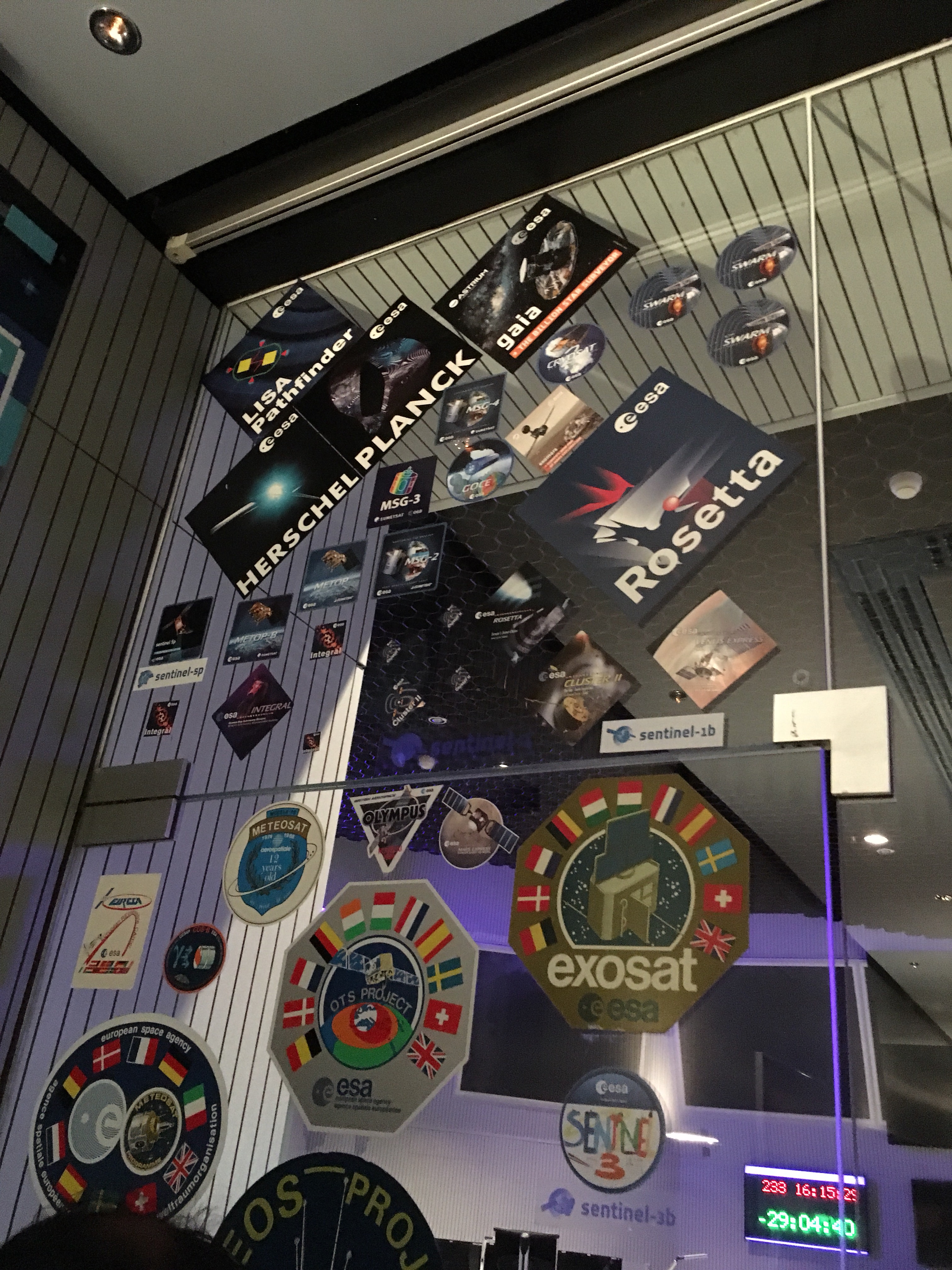
Presentation Aeolus mission
We concluded this amazing and super interesting afternoon with a presentation by the Mission Manager (Rune Floberghafen), a mission scientist (Anne Grete Straume) and Satellite manager (Frank de Bruin).
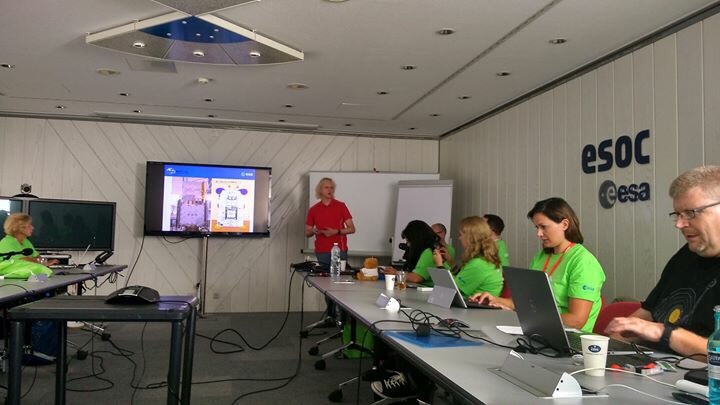
First designs go back 18 years ago. Designing the laser was the most difficult part.
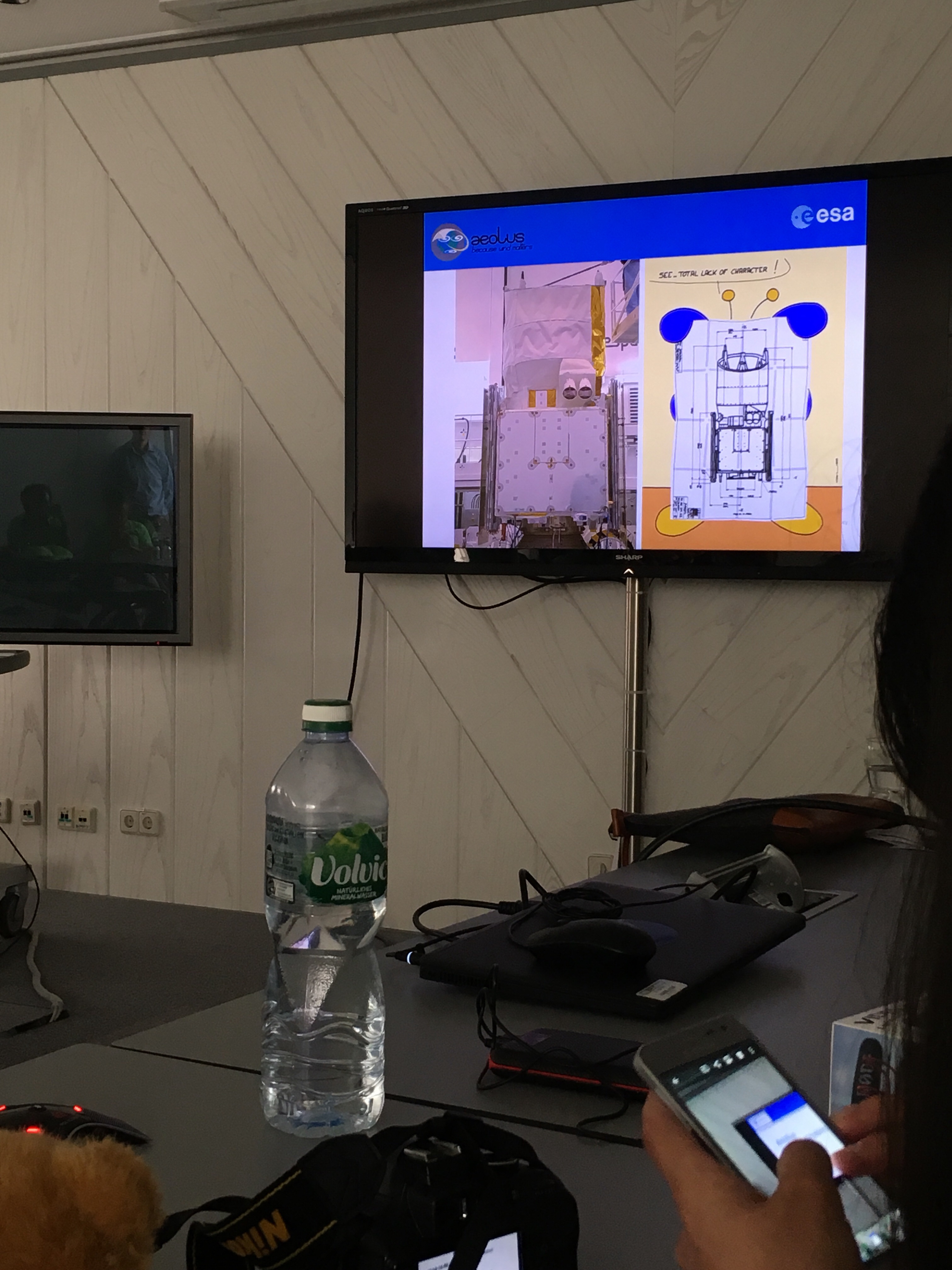
The satellite took the boat to Kourou. They couldn’t risk damaging the measuring instruments.

The Vega rocket is assembled in the launch tower as opposed to other launcher like Ariane 5. The Vega rocket can stay out for 14 days.
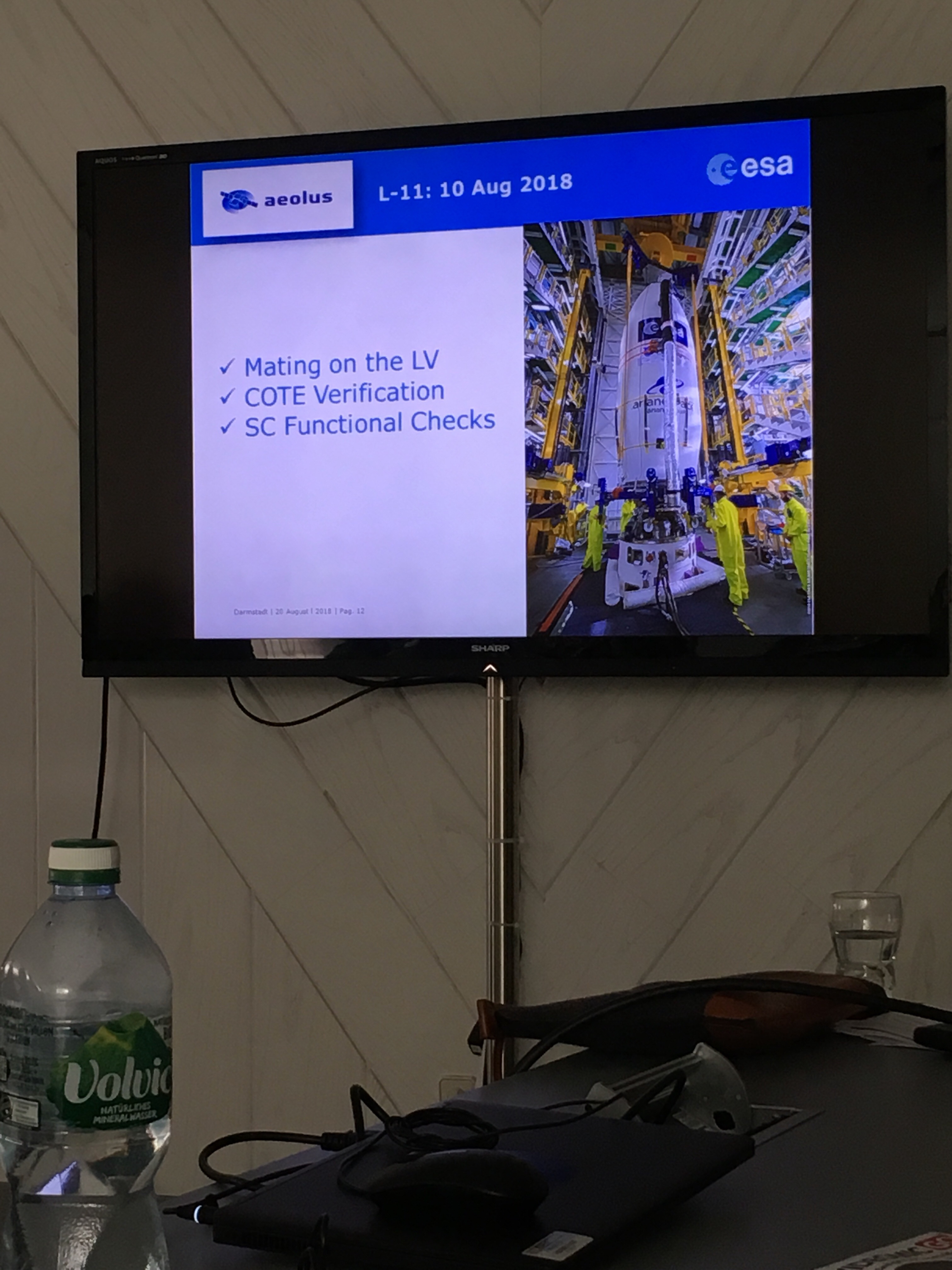
It was another fantastic SocialSpace event where I learned new things and met new and interesting people.
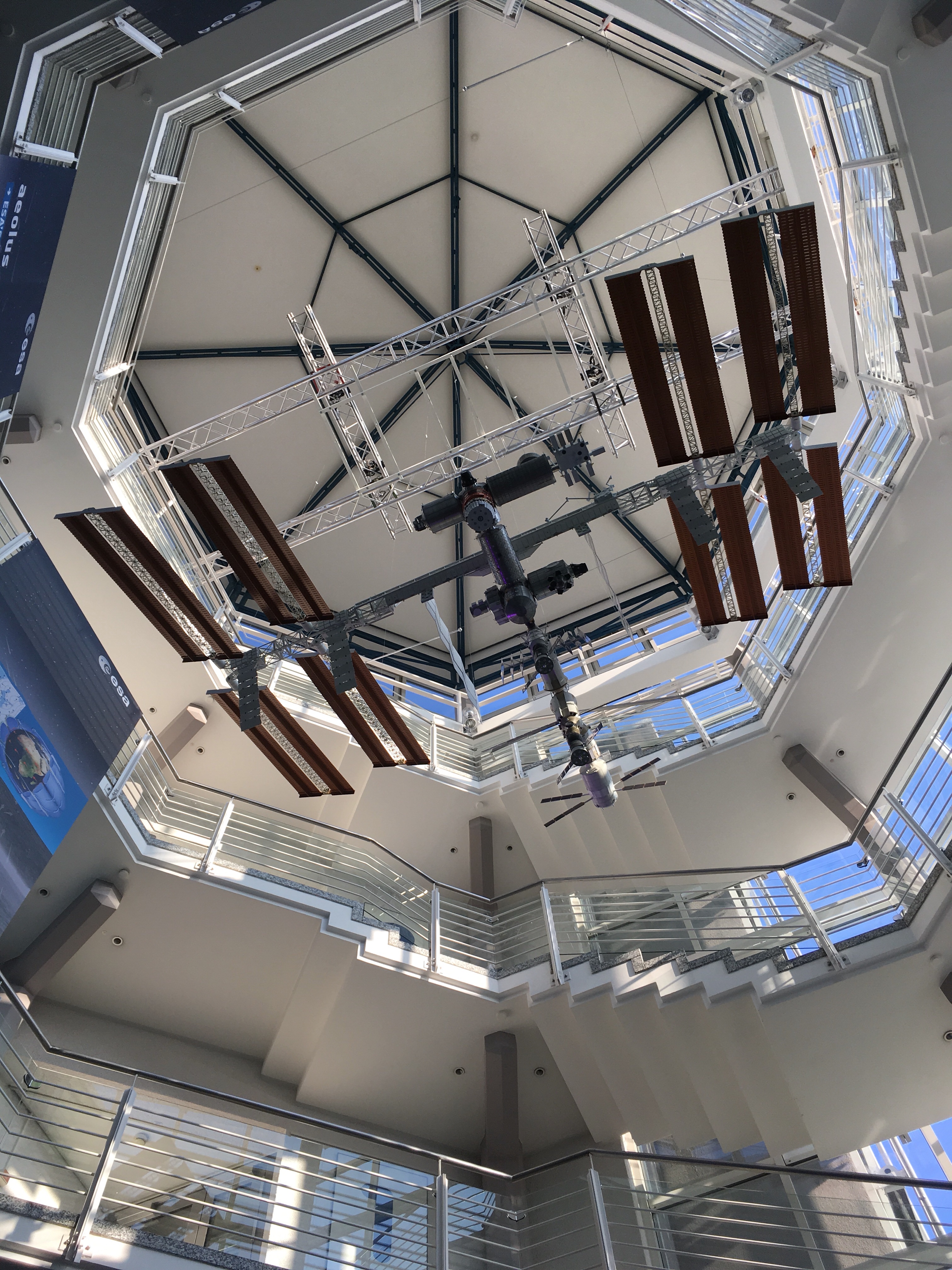
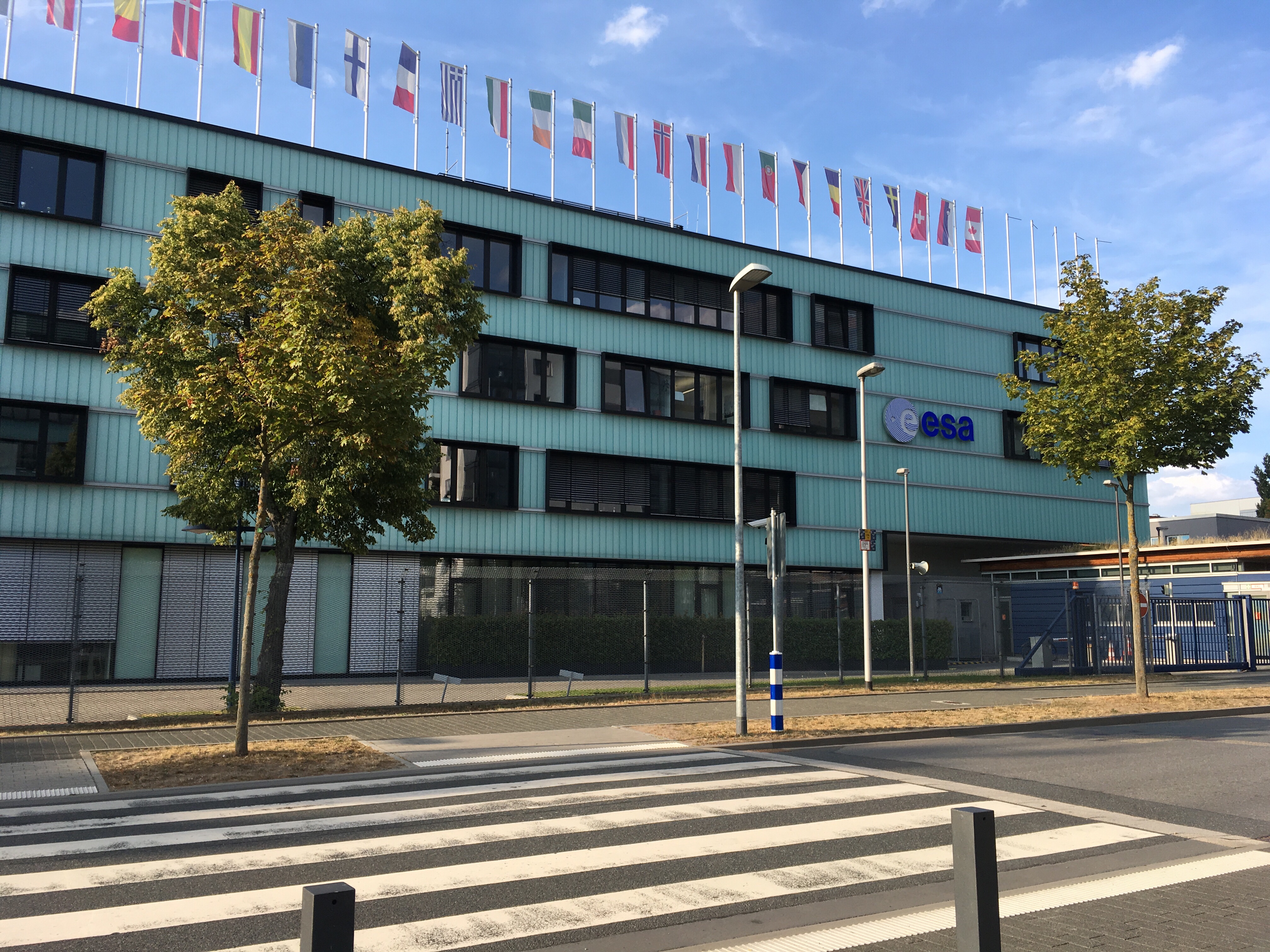
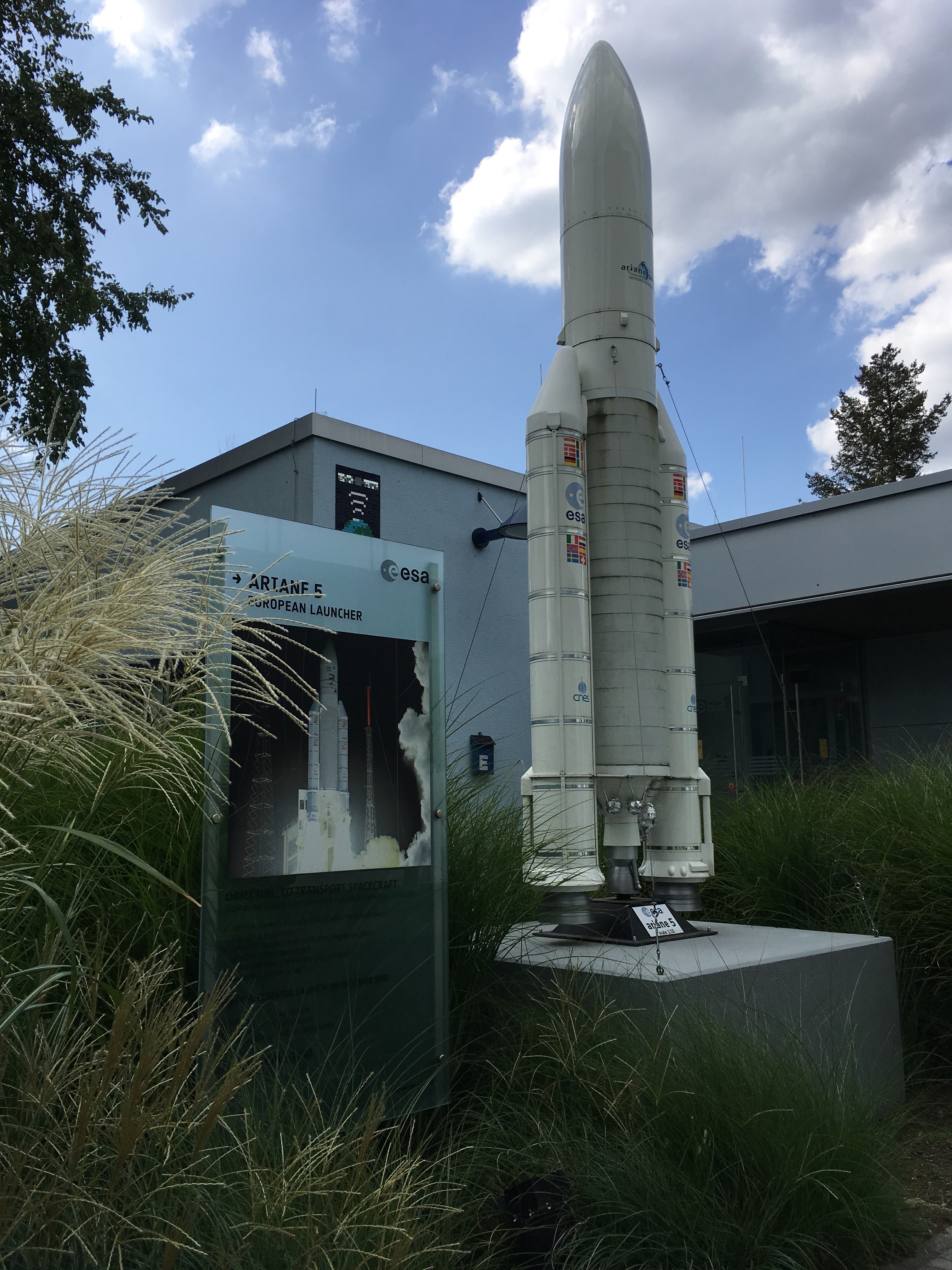
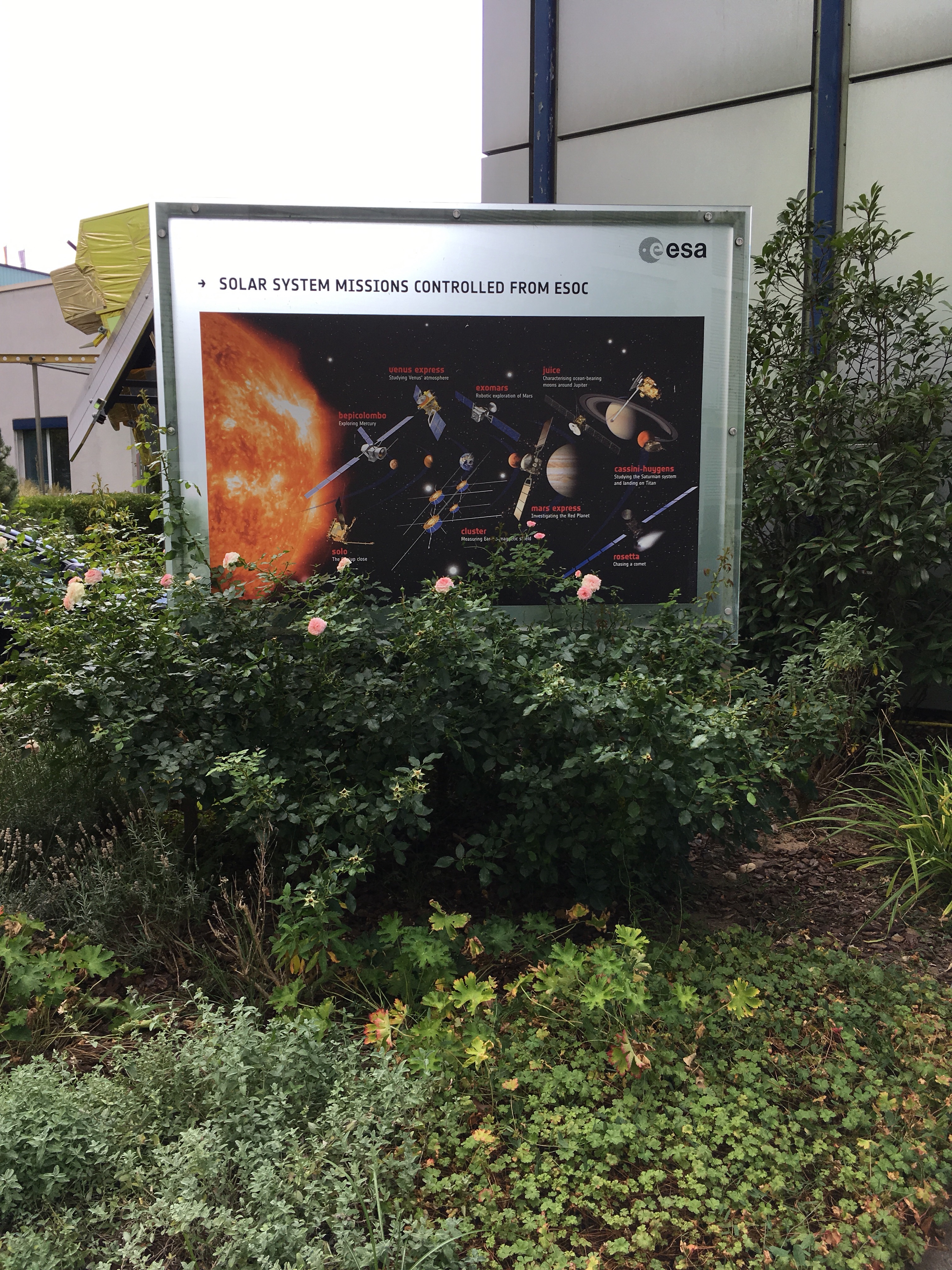
I work for the Faculty of Humanities and Sciences at the University of Maastricht. A new research group is being set up within this faculty which will focus on particle physics and gravitational waves. The main researcher has access to data of the detectors LIGO (USA) and Virgo (Italy). I already wrote the following blogs regarding the two detectors: https://linda043.wordpress.com/2016/02/11/einstein-was-right-gravitational-waves-detected/
https://linda043.wordpress.com/2013/10/12/gravitational-waves/
Maastricht lies in South Limburg and South Limburg is a candidate for the successor to the current telescopes. In 2 years time the decision will be made where this new telescope will be built. The soil in South Limburg is perfect for this underground telescope. The telescope has already got a name, the Einstein Telescope.
An article on the website of Maastricht University:
https://www.maastrichtuniversity.nl/news/sterrenkundige-droom-wordt-werkelijkheid
So I’m really glad that my personal interests collide with my work although it’s in a supportive way (I’m no scientists unfortunately).
I was one of the lucky ones to attend the landing event of French astronaut Thomas Pesquet at the European Astronaut Center (EAC) in Cologne on 2 June 2017. Great place to meet new and old friends.
And most importantly the landing went well.
The amazing hall of the EAC with a great model of the ISS
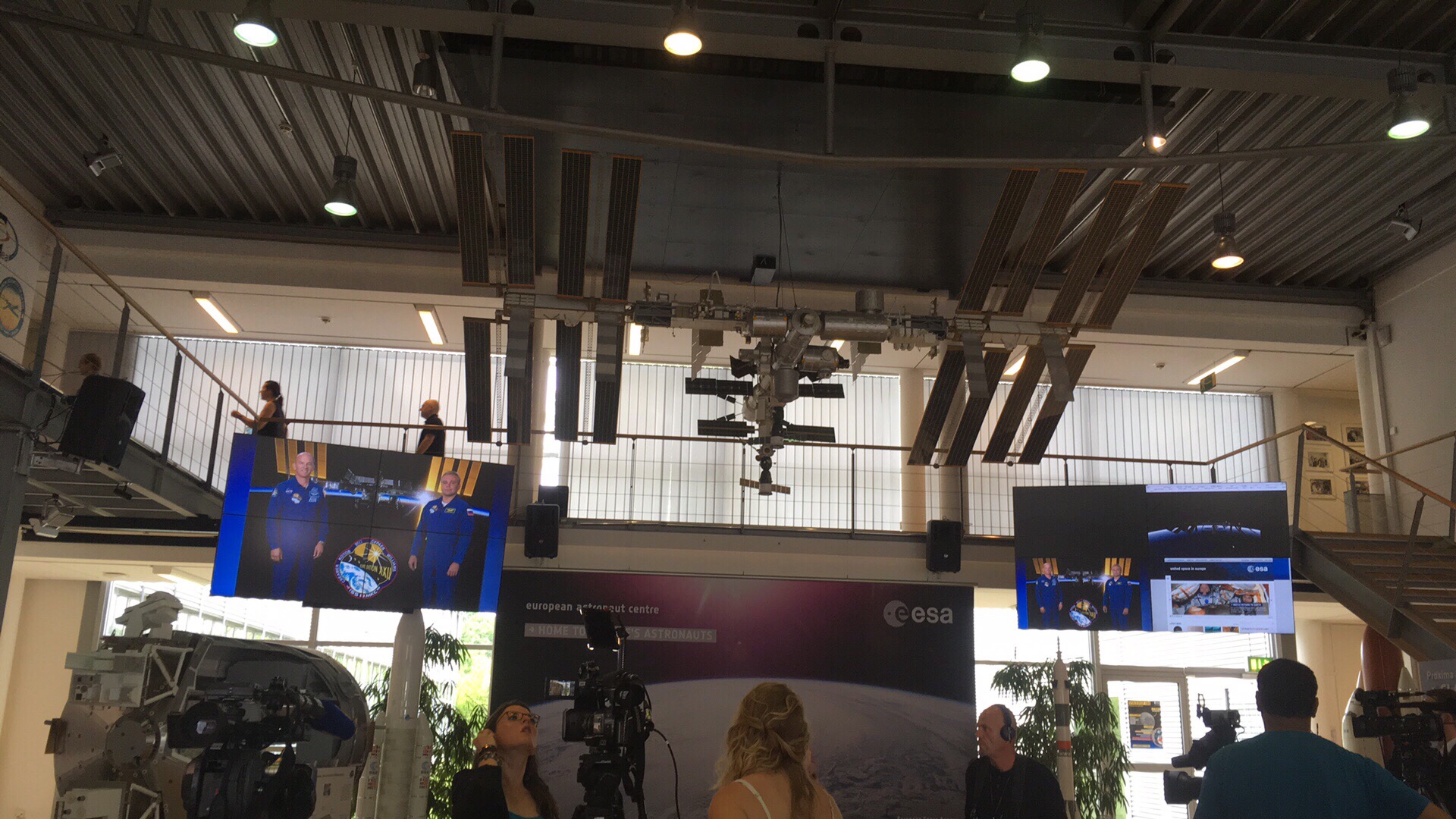
What a lovely miniature Soyuz with a mini Alexander Gerst:
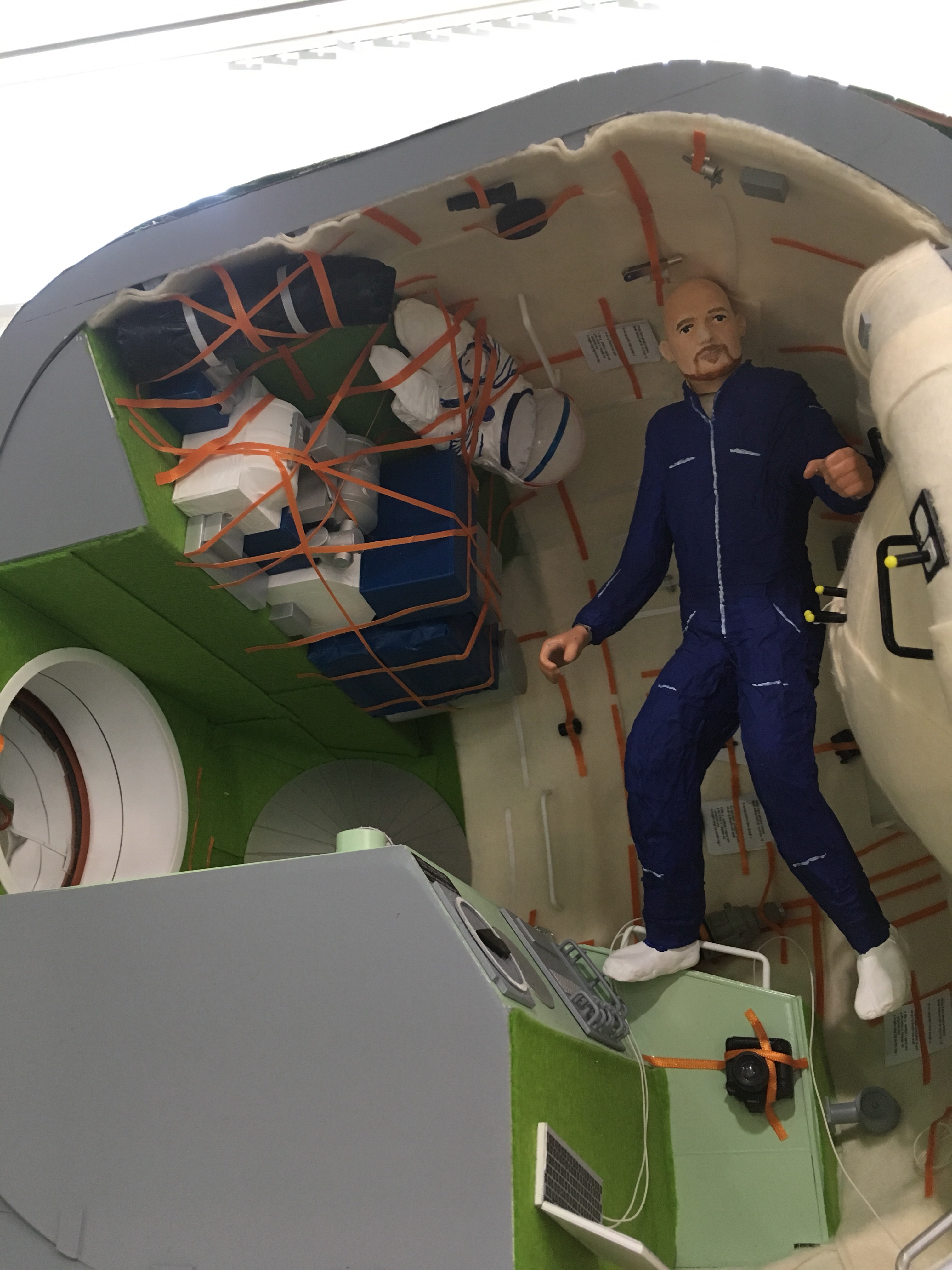
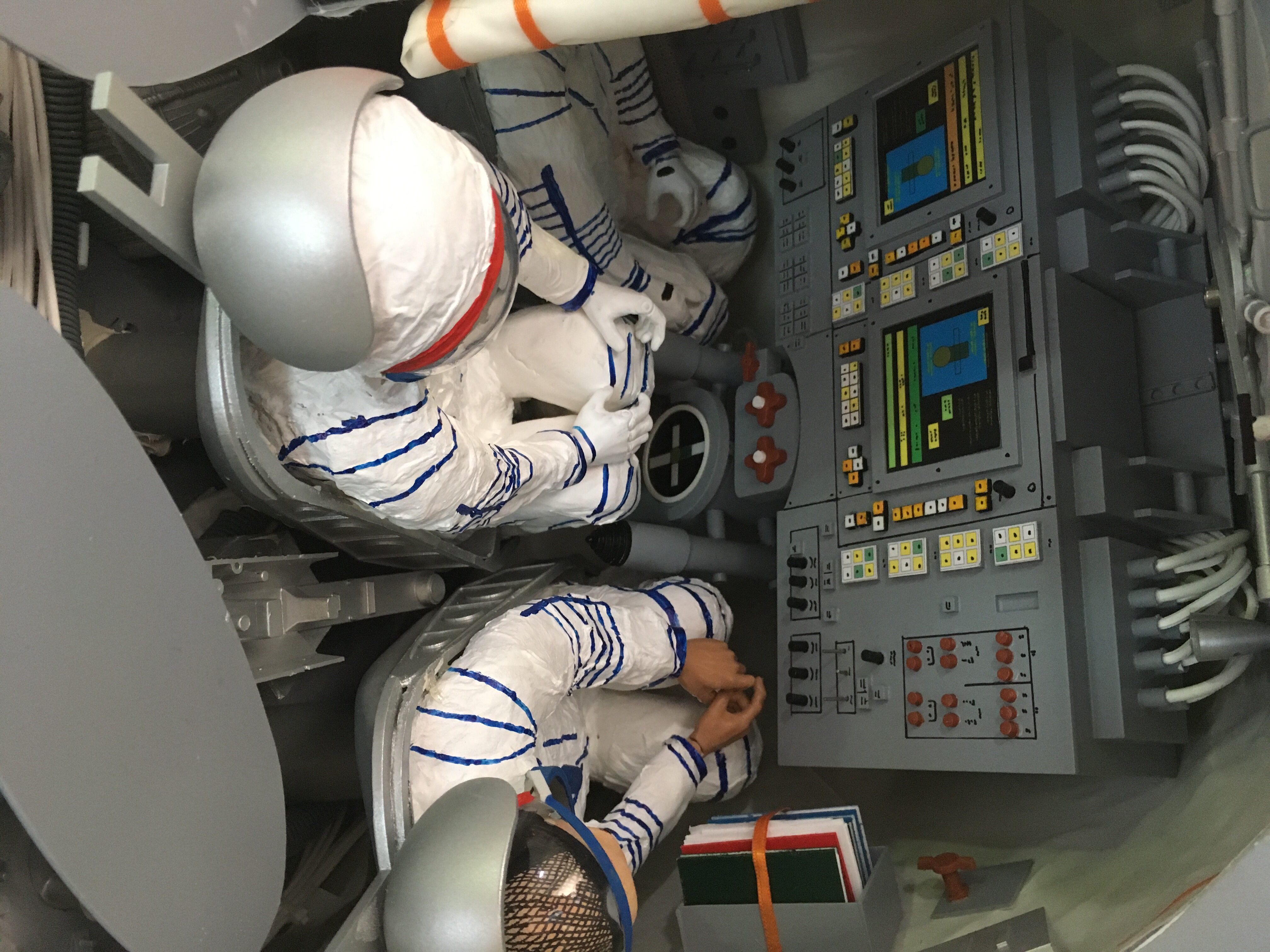
Photo of the screen showing the landing:
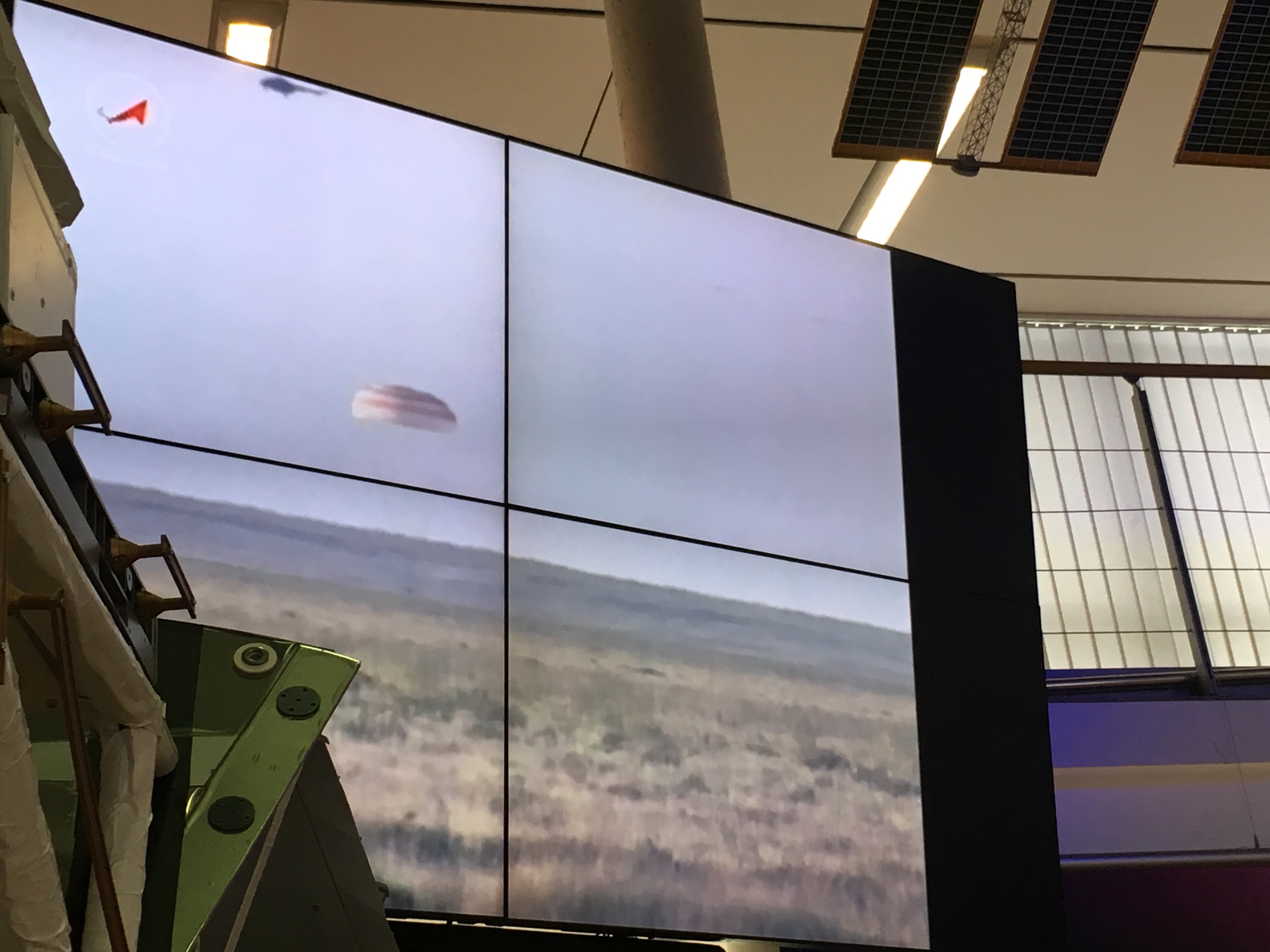
The hall with all the press people:
Groups photo 
My son and I visited the Open Day at ESA’s Technical Center on 8 October. Really a must do and see experience. Numerous lectures by scientists and astronauts and a tour of the Test Center are one of the many activities on that day. I was able to talk to a couple of scientists about their missions, like GAIA (thanks Jos de Bruijne) and Galileo. A visit to neighbor Space Expo is also possible. My son loved the centrifuge the most.
There’s a fantastic program for kids at the open day but there’s also a lot to see and do for adults. The open day is usually in October so don’t miss the next one. You won’t regret it!
This is the Large European Acoustic Facility (LEAF):

The beautiful Hertz radio frequency test chamber:
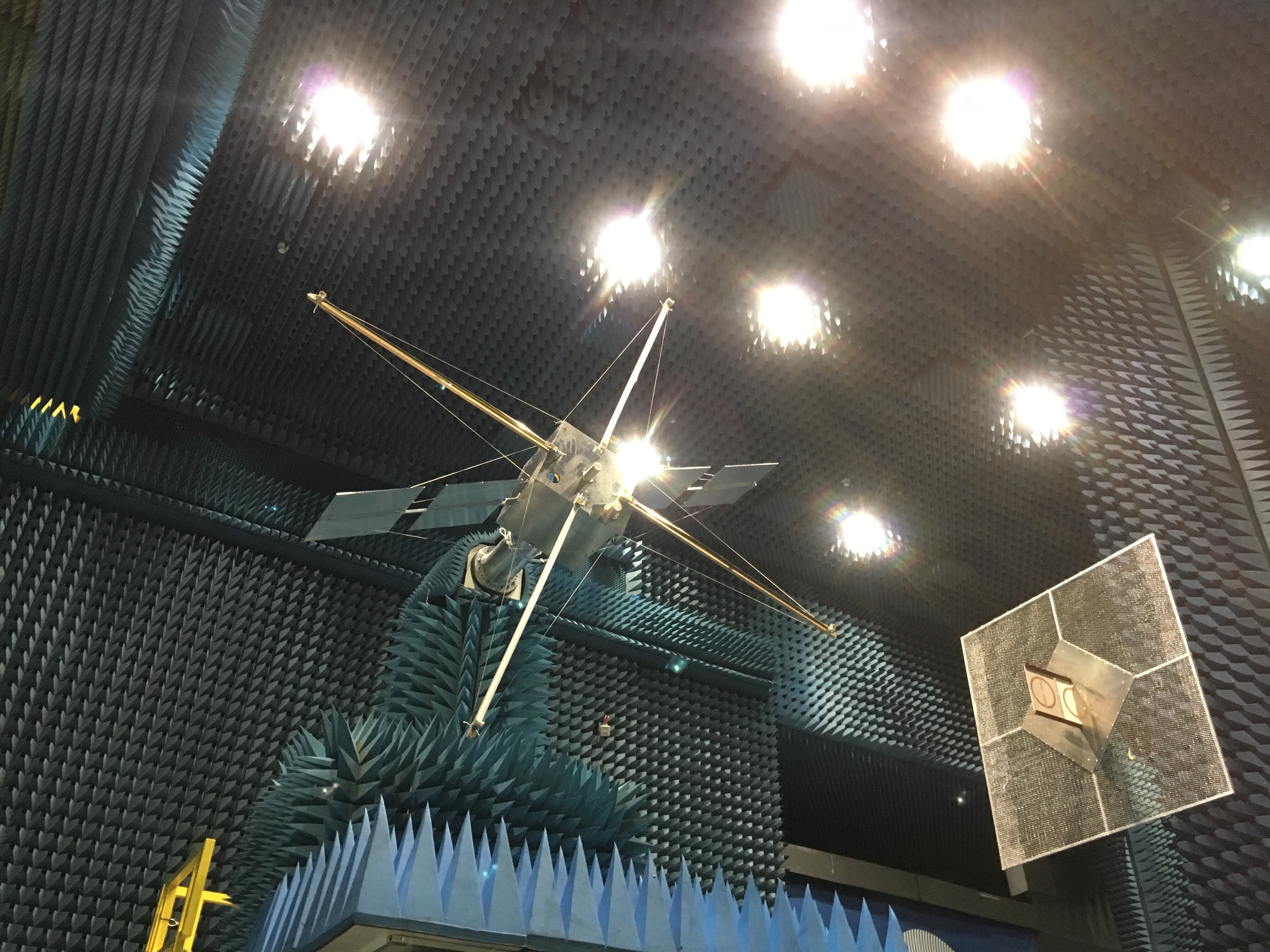
Moon rover and test area in the Erasmus High Bay:
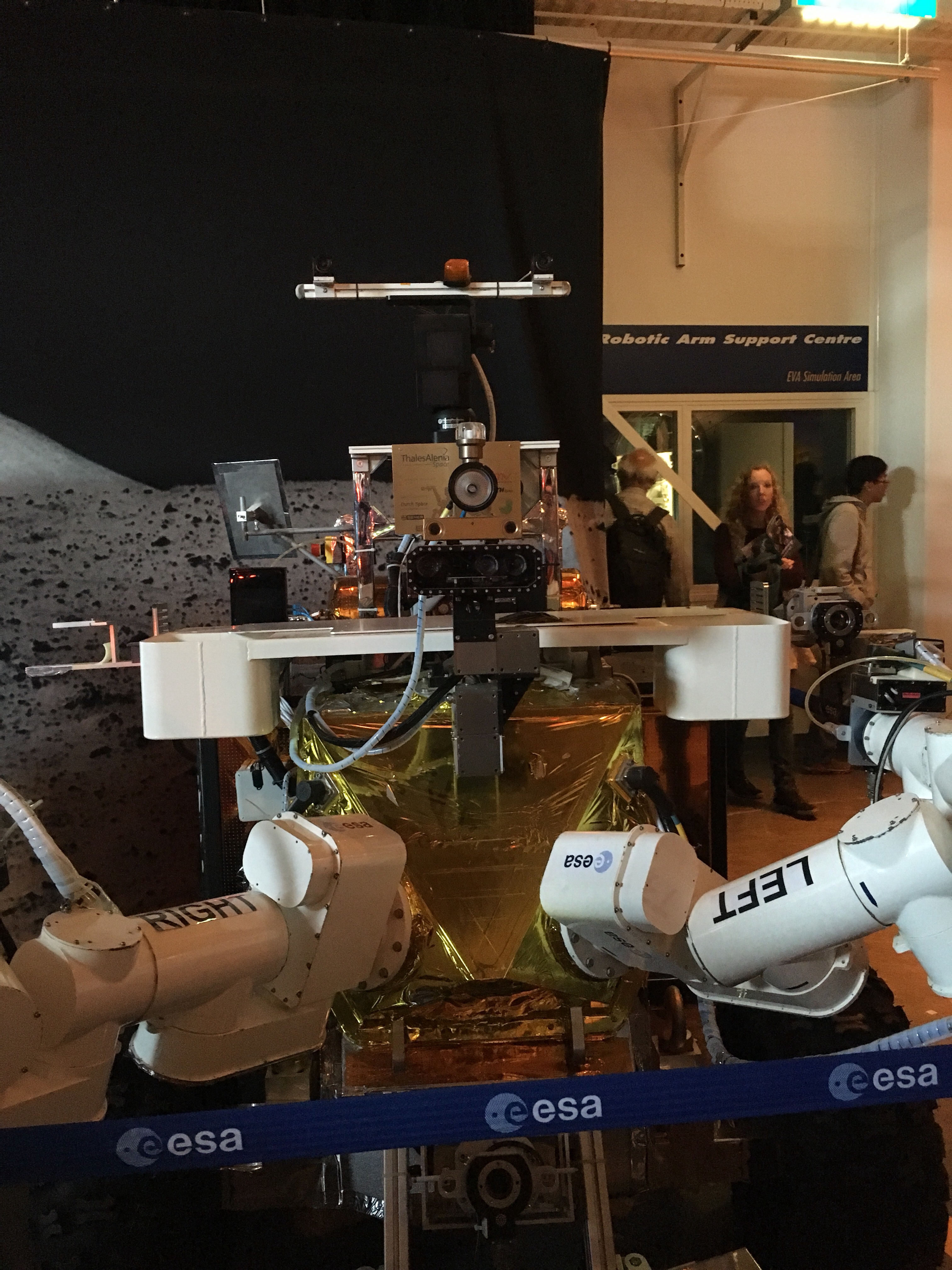
ExoMars model:
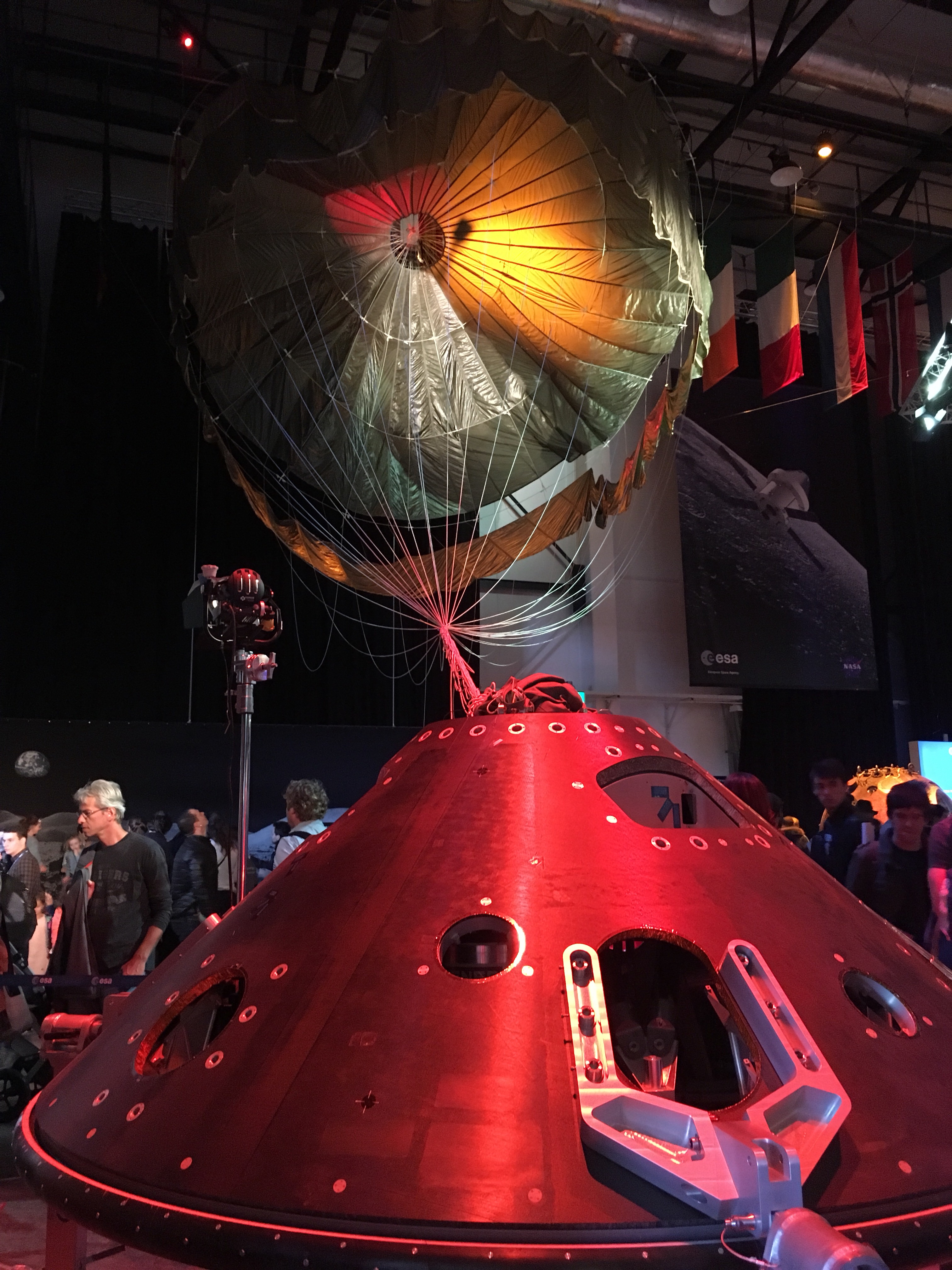
The Centrifuge at full speed used for testing:
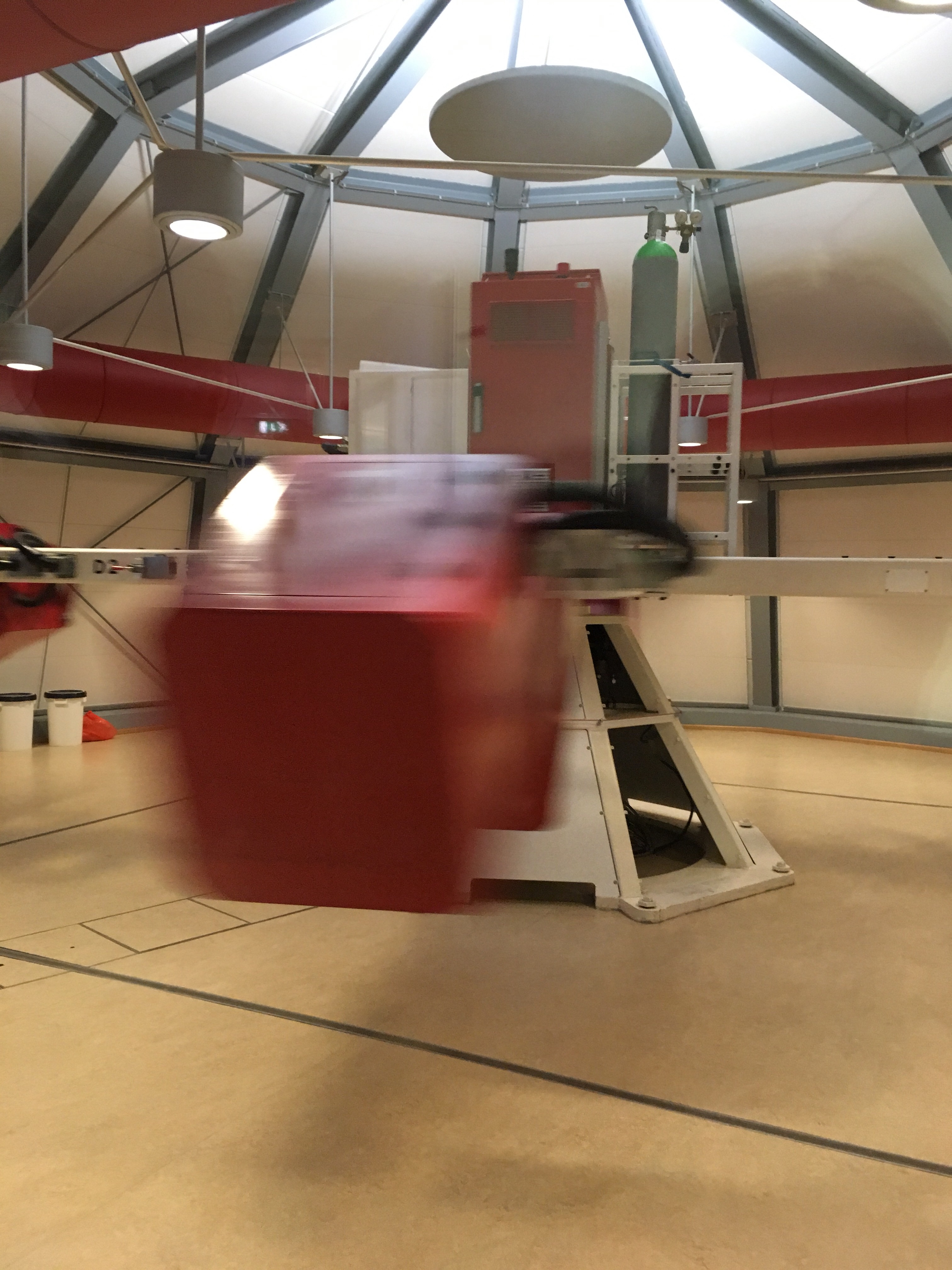
The charred capsule of Dutch astronaut André Kuipers:
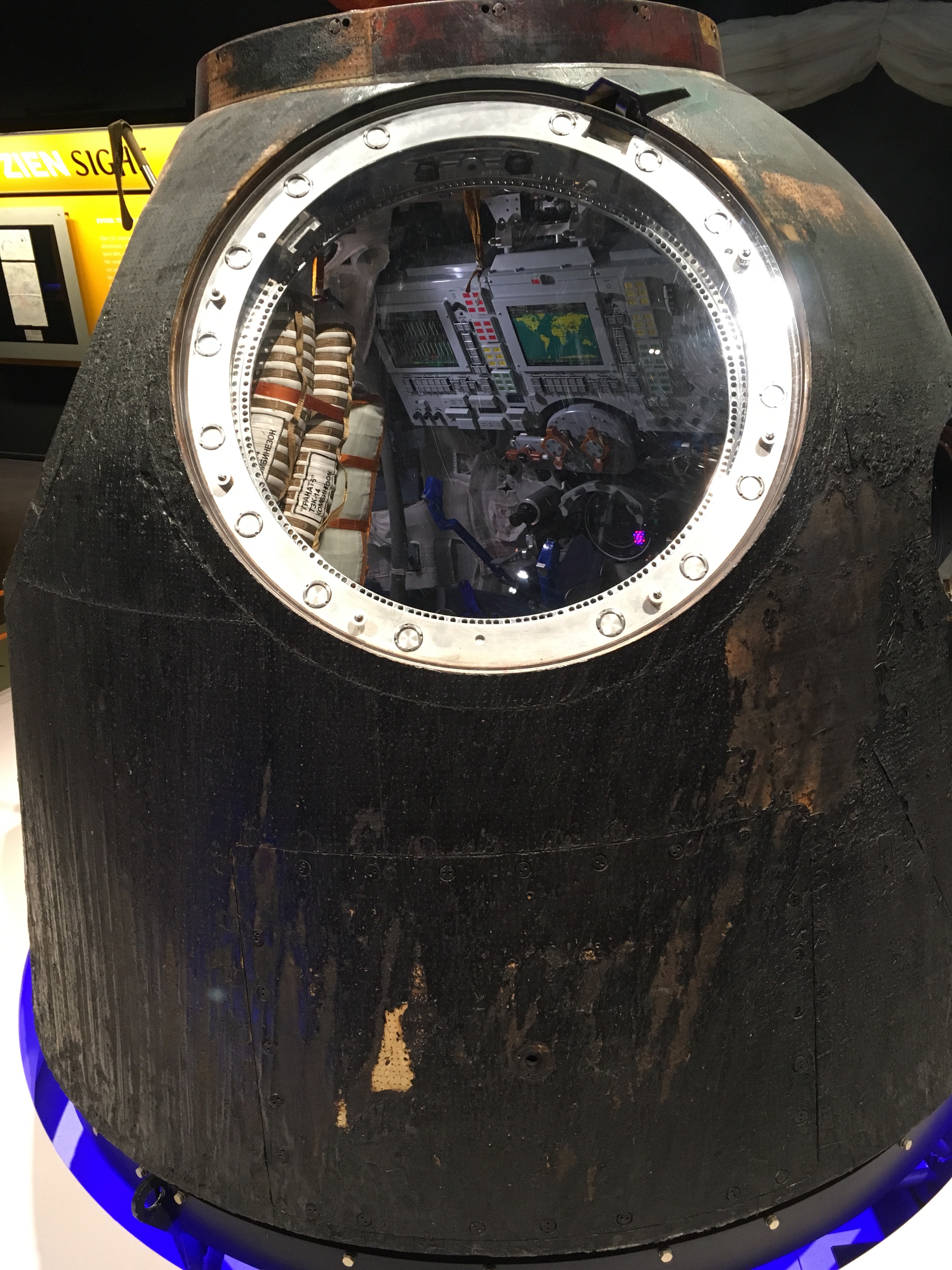
Italian astronaut Samantha Cristoforetti wore this Startrek suit on Startrek day on the ISS in 2015. 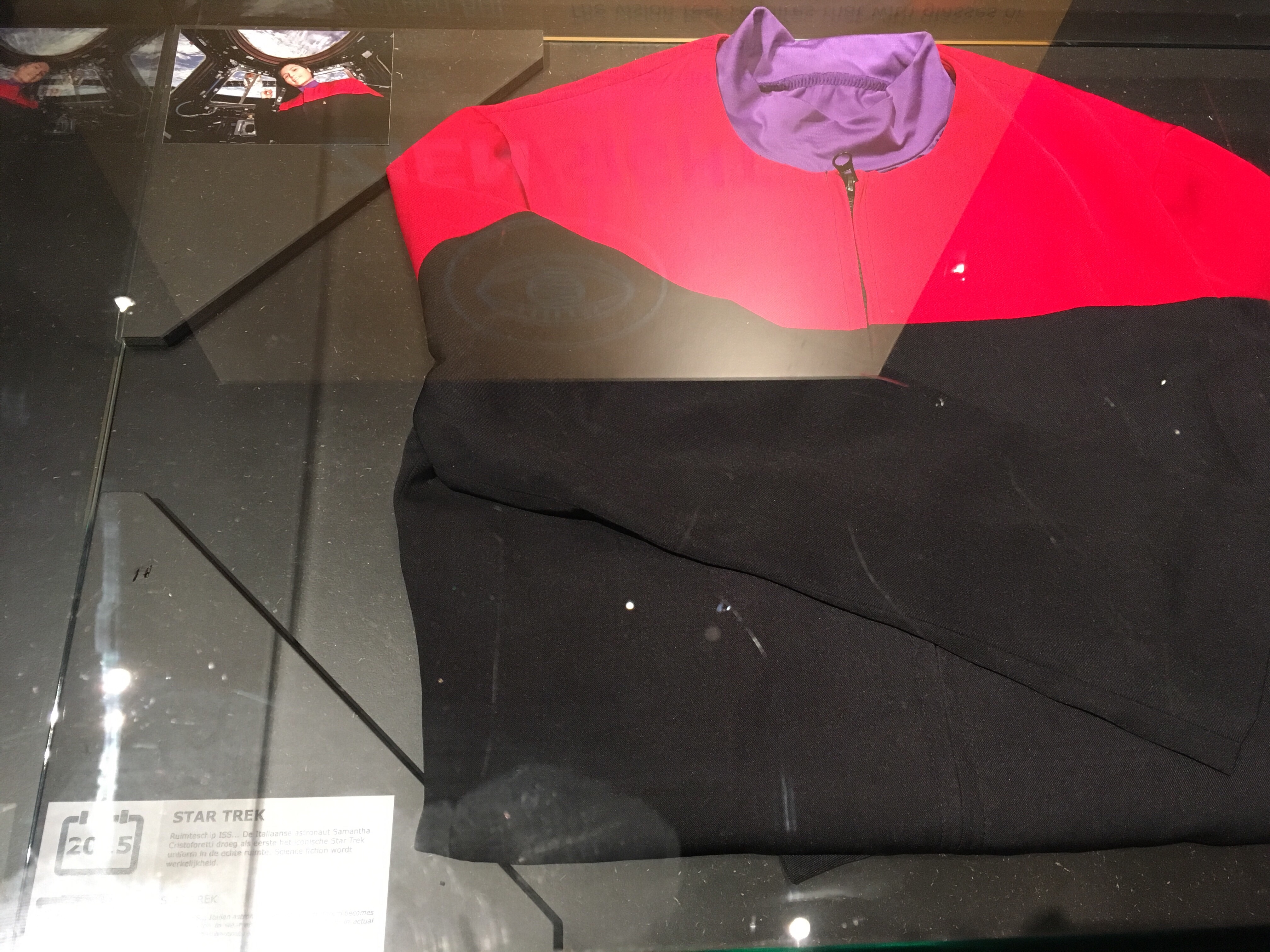

Me and the capsule of André Kuipers. He landed with this capsule on 1 July 2012. Space Expo acquired this capsule mainly by donations. It was pretty costly to buy this capsule from the Russians.
 Today the GAIA team of the European Space Agency shared the following exciting news. The biggest star map of our galaxy was published. The data of nearly 1.7 billion stars is included in this star map. Scientists/astronomers can conduct years of science with these data. What a detail is found in these images. Wish I was an astronomer at this moment. Following GAIA team members on social media is a joy to do and in there’re so kind when meeting them in person.
Today the GAIA team of the European Space Agency shared the following exciting news. The biggest star map of our galaxy was published. The data of nearly 1.7 billion stars is included in this star map. Scientists/astronomers can conduct years of science with these data. What a detail is found in these images. Wish I was an astronomer at this moment. Following GAIA team members on social media is a joy to do and in there’re so kind when meeting them in person.
The ESA announcement can be found here:
http://sci.esa.int/gaia/60192-gaia-creates-richest-star-map-of-our-galaxy-and-beyond/
Auke Pieter Colijn, werkzaam aan de UvA en UU (bijzonder hoogleraar) is een experimenteel astrofysicus. Hij test of theorieën kloppen. Hij is een van de 40 onderzoekers van de detector in Gran Sasso (LNGS). Het heelal lijkt heel eeg leeg. De massa van sterren en planeten geeft maar een heel lage dichtheid.
Als je de snelheid van sterren in een sterrenstelsel (middels roodverschuiving) meet, verwacht je een afnemende curve. Sterren dichtbij de kern bewegen sneller dan verder weg bij het centrum. Na metingen blijkt dat niet zo te zijn:
Het hele heelal is 2 graden Kelvin. Samenstelling heelal nu: donkere materie 72%, atomen 4,6%, donkere materie 23%. Donkere materie zendt geen licht uit. 13,7 miljard jaar geleden: donkere materie 63%, atomen 12%, fotonen 15%, neutrino’s 10%.
Donkere energie heb je nodig om te verklaren om te verklaren dat het heelal steeds sneller uitdijdt. Op een gegeven moment (miljarden jaren later) kun je alleen maar de sterren van de Melkweg ziet. Het licht van andere sterren bereikt ons niet meer.
Alles is opgebouwd uit 3 onderdelen: elektronen, up en down quarks.
Theorieën met mogelijke deeltjes die proberen om donkere materie te verklaren:

Het gewicht van donkere materie op aarde is slechts 300 gram. Donkere materie is niet gelijk verdeeld.
3 manieren om donkere materie te meten: indirect via satellieten, zelf maken via een deeltjesversneller en direct meten.

Detectoren richten zich op 1 van de 3 volgende gevolgen van de botsing tussen donkere materie en atomen: warmte, zendt het licht uit of komen er ionen uit (ionisatie). Alle detectoren zitten zo diep mogelijk. Om zo min mogelijk last te hebben van andere deeltjes. De faciliteiten in Gran Sasso (midden Italië):

Waarom moeilijk om te detecteren: nagenoeg is alles radioactief. Alle onderdelen zijn getest op radioactiviteit. Net begonnen met meten. Meest gevoelige detector op dit moment.
Our trip to the Solar Eclipse on 21 August is planned. We plan to see the solar eclipse in Rexburg, Idaho. Totality will last 2 minutes and 17 seconds in Rexburg and Rexburg has a high chance of clear skies in summer. We’ll keep a close eye on the weather forecast and are able to drive to another place.
More info about the solar eclipse in Rexburg can be found at:
https://www.greatamericaneclipse.com/idaho/
http://www.eclipse2017.org/2017/communities/states/ID/Rexburg_90.htm
https://en.wikipedia.org/wiki/Solar_eclipse_of_August_21,_2017
As a true spacefan a visit to the Kennedy Space Center (KSC) is a must go eventually somewhere in your life. I was able to combine a visit to the KSC with my first half marathon at the Spacecoast Marathon in Cocoa Beach.
I stayed at the La Quinta Inn Cocoa Beach, once owned by the Original Mercury 7 astronauts.
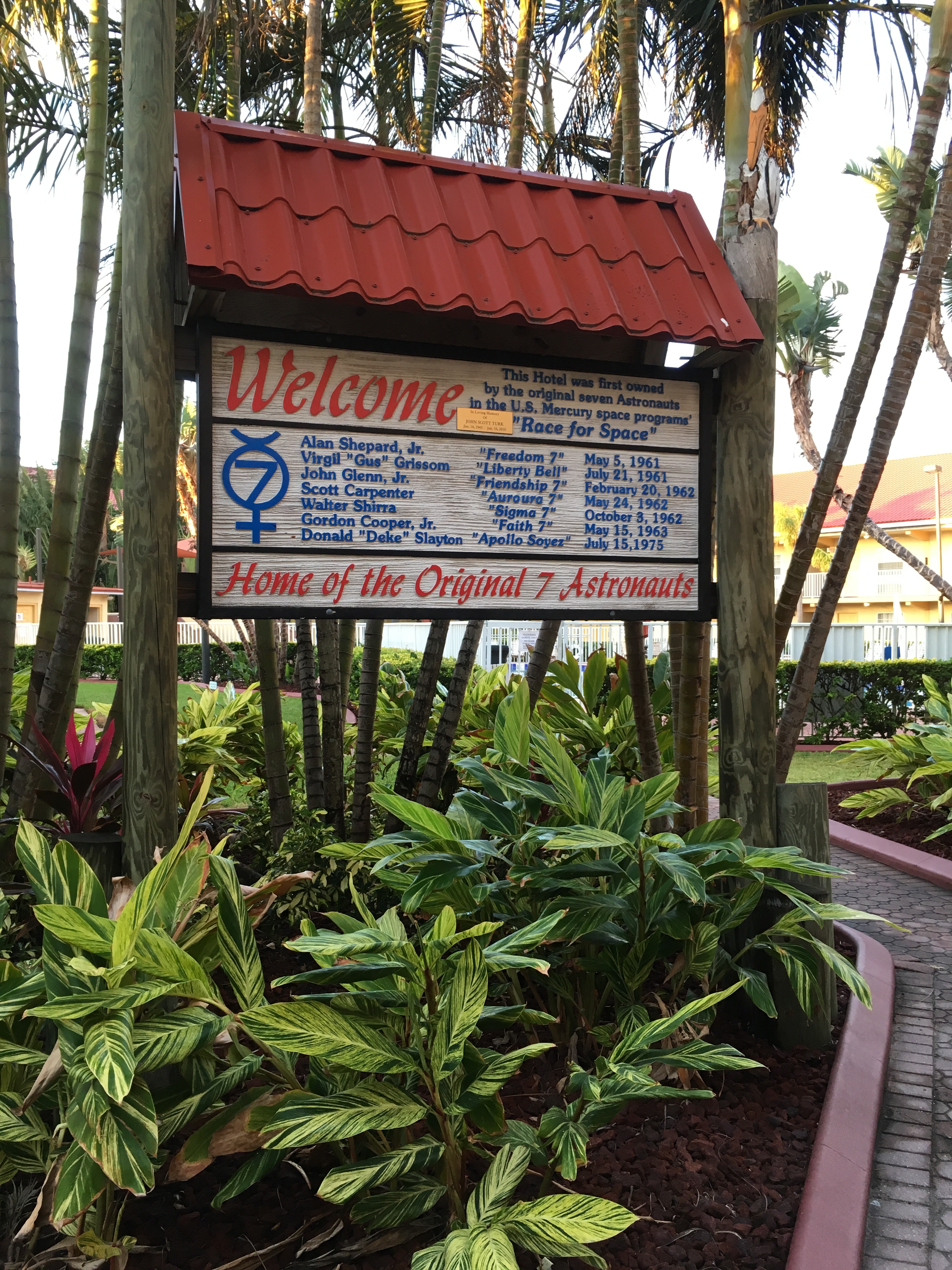
I had all day for my visit. And still I couldn’t see and do everything. Beforehand you have to decide what you absolutely want to see and what sights/parts are a bonus. I was there before the doors were open. The doors open at 9 AM. Before the doors open they play the national anthem. Everybody turned to the American flight and sang along. It gave me goosebumps.
The entrance is already impressive.
On the dark grey wall is a part of the famous speech of president J.F. Kennedy:
For the eyes of the world now look into space, to the moon and to the planets beyond, and we have vowed that we shall not see it governed by a hostile flag of conquest, but by a banner of freedom and peace.
At the entrance is also the old countdown clock. It has been at KSC since the Apollo era. It retired in December 2014.
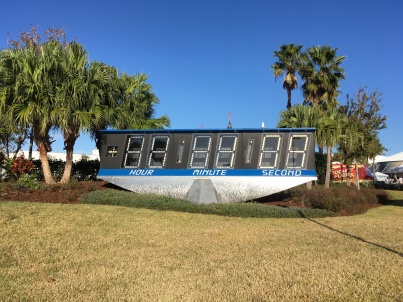
So much to see:
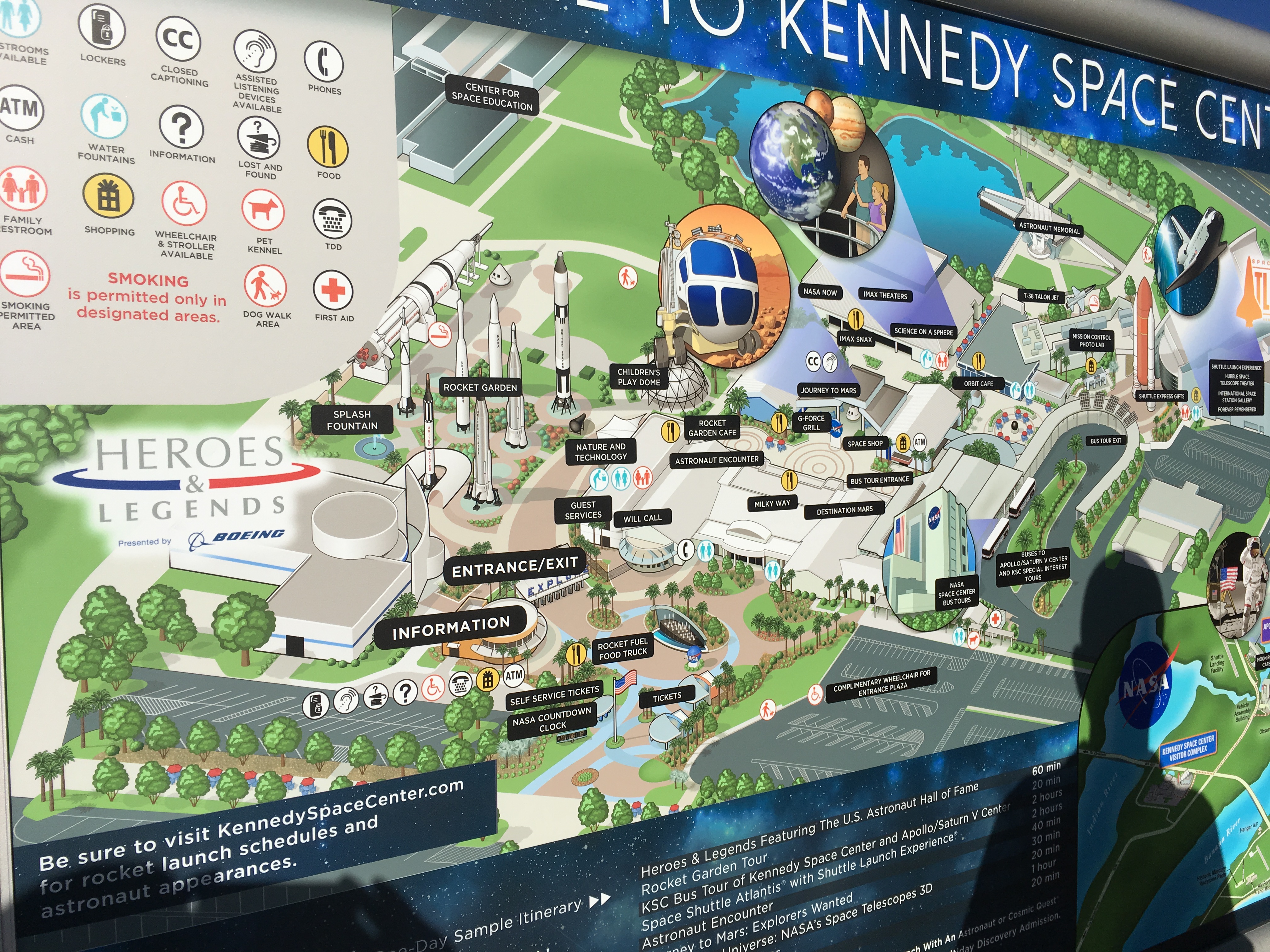
The Astronaut Hall of Fame is integrated in the new exhibition Heroes and Legends. This opened on 11 November 2016. It is impressive. The exhibition focuses on the early space missions.
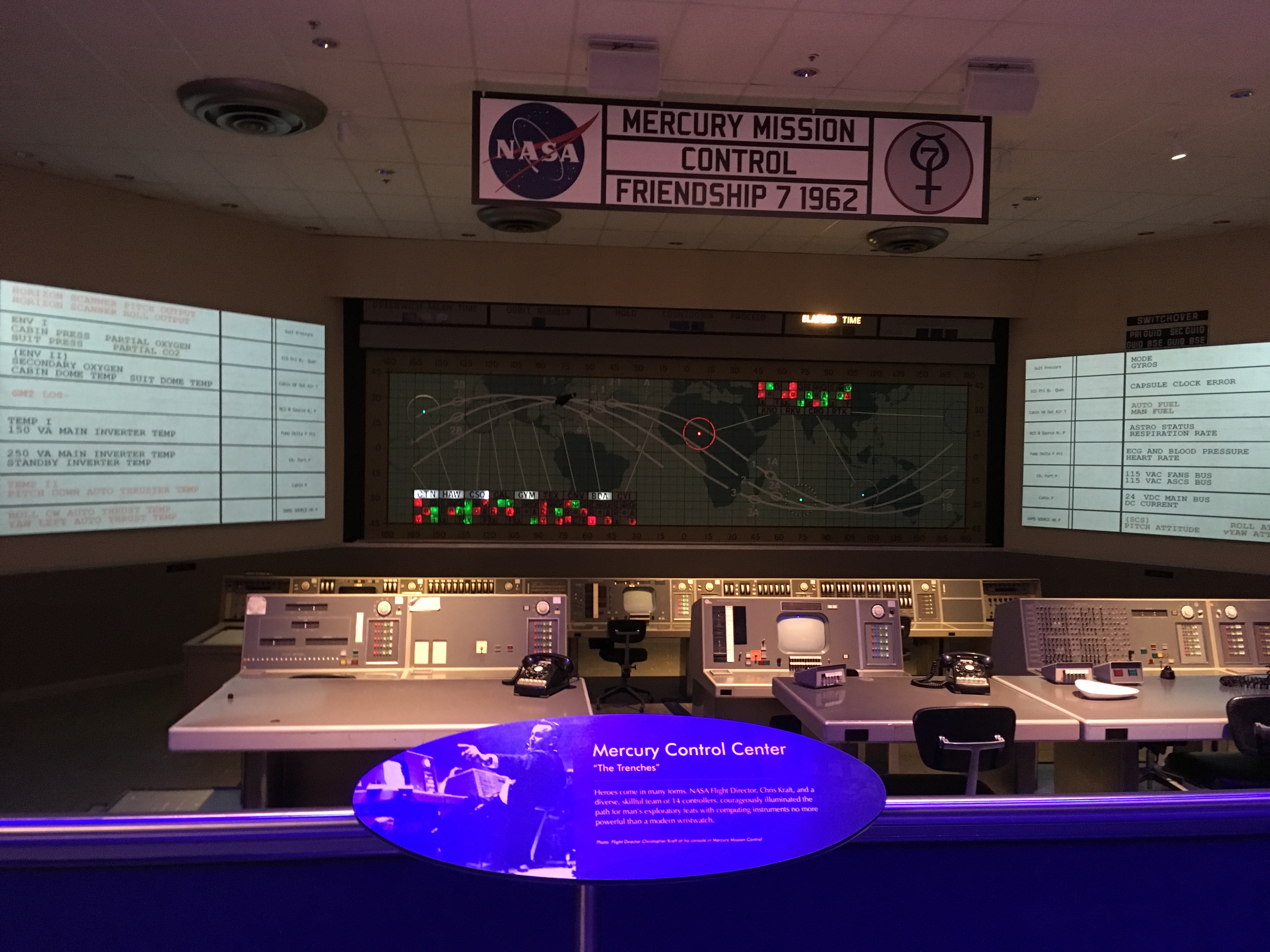
This is the Gemini 9A capsule (by T. Stafford and E. Cernan in 1966) and an original Mercury space suit.
From this exhibition you walk straight into the US Astronaut Hall of Fame.
The second exhibition was the most famous one, Atlantis. My first space shuttle and also the last one that flew (in 2011). This exhibition is huge.
You can easily see it has flown in space numerous times. Near the exhaust you see the damage that was made during the flight.
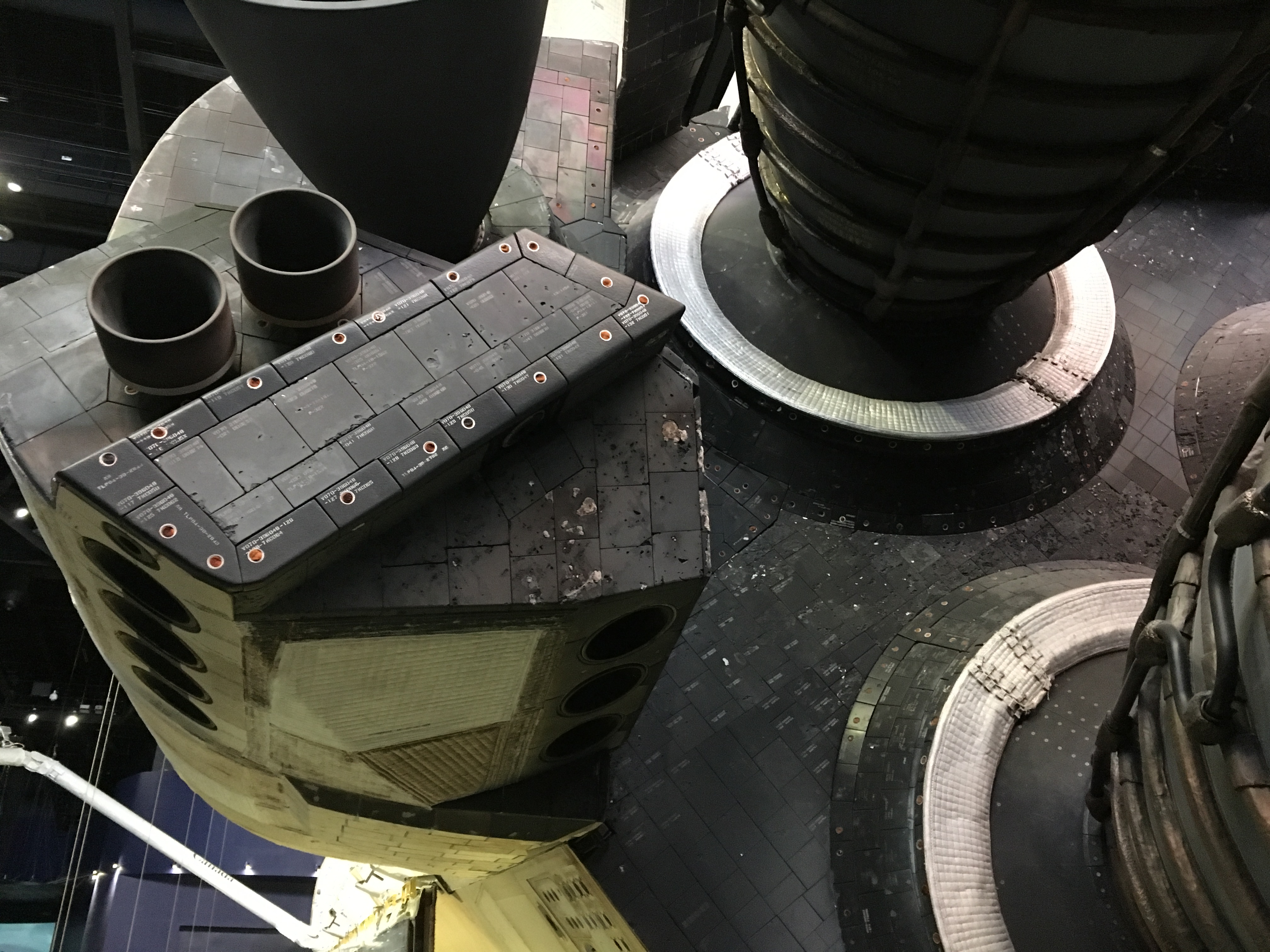
You may also find the astrovan of the space shuttle program and the spaceshuttle tires of STS-135, the last space shuttle flight.
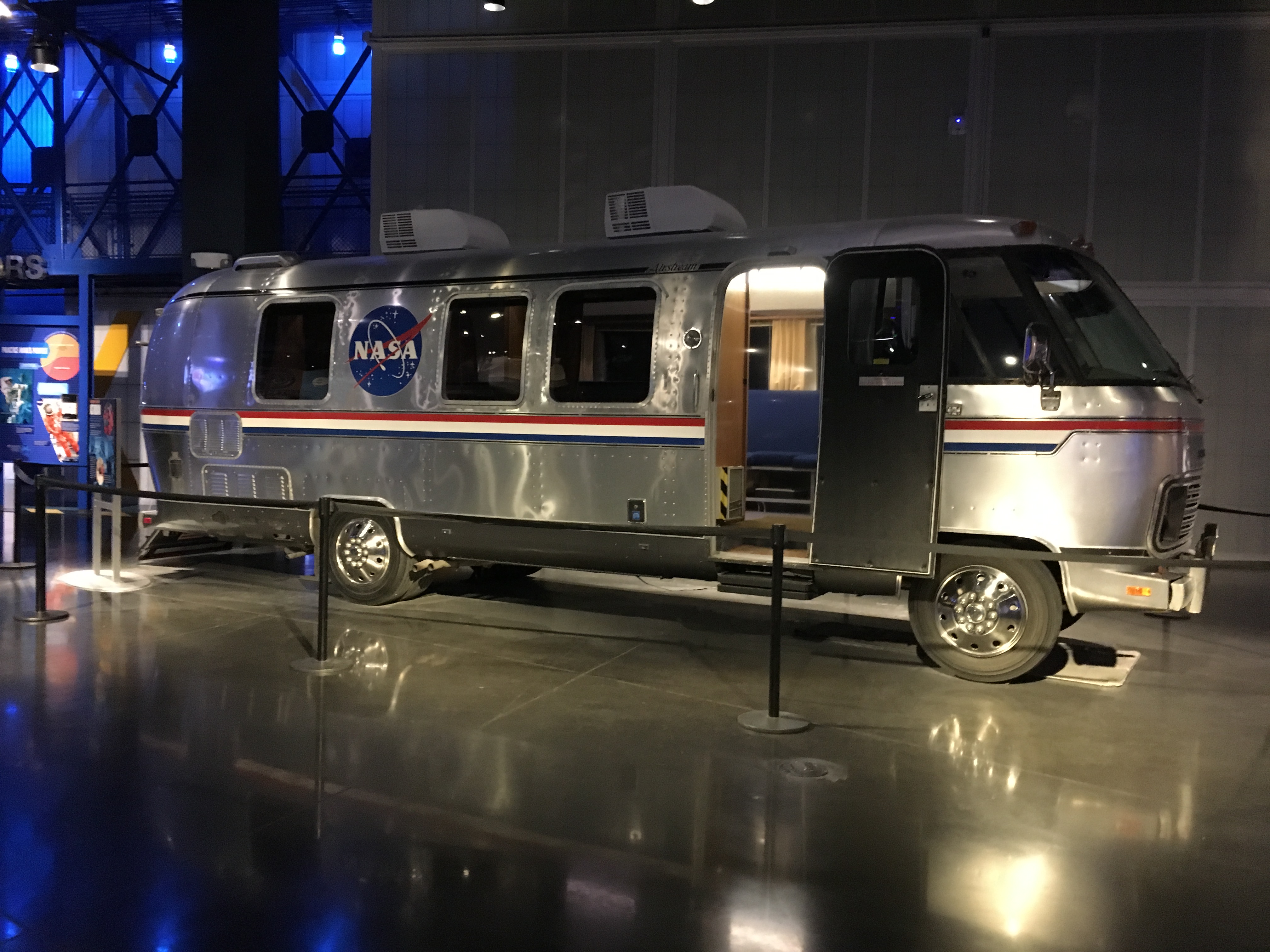

On a wall between the Heroes and Legends exhibition and the Atlantis exhibition there is a mural of the ISS with all the flags of the partners. Real international cooperation.
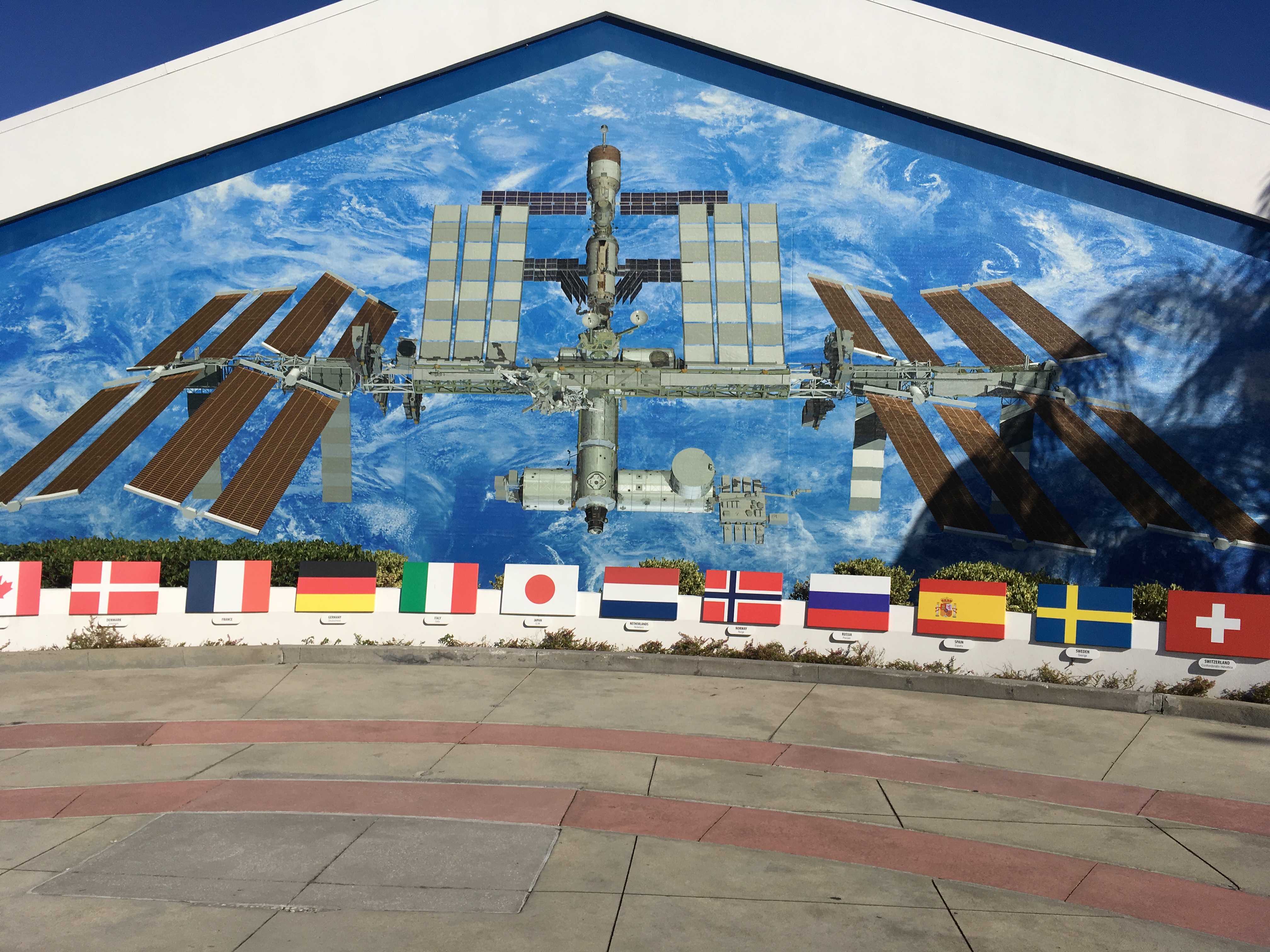
Near the mural there is a mockup of the new Orion capsule. Still being tested and hopefully in 2018 the first manned test. This capsule will be used for future Mars missions.
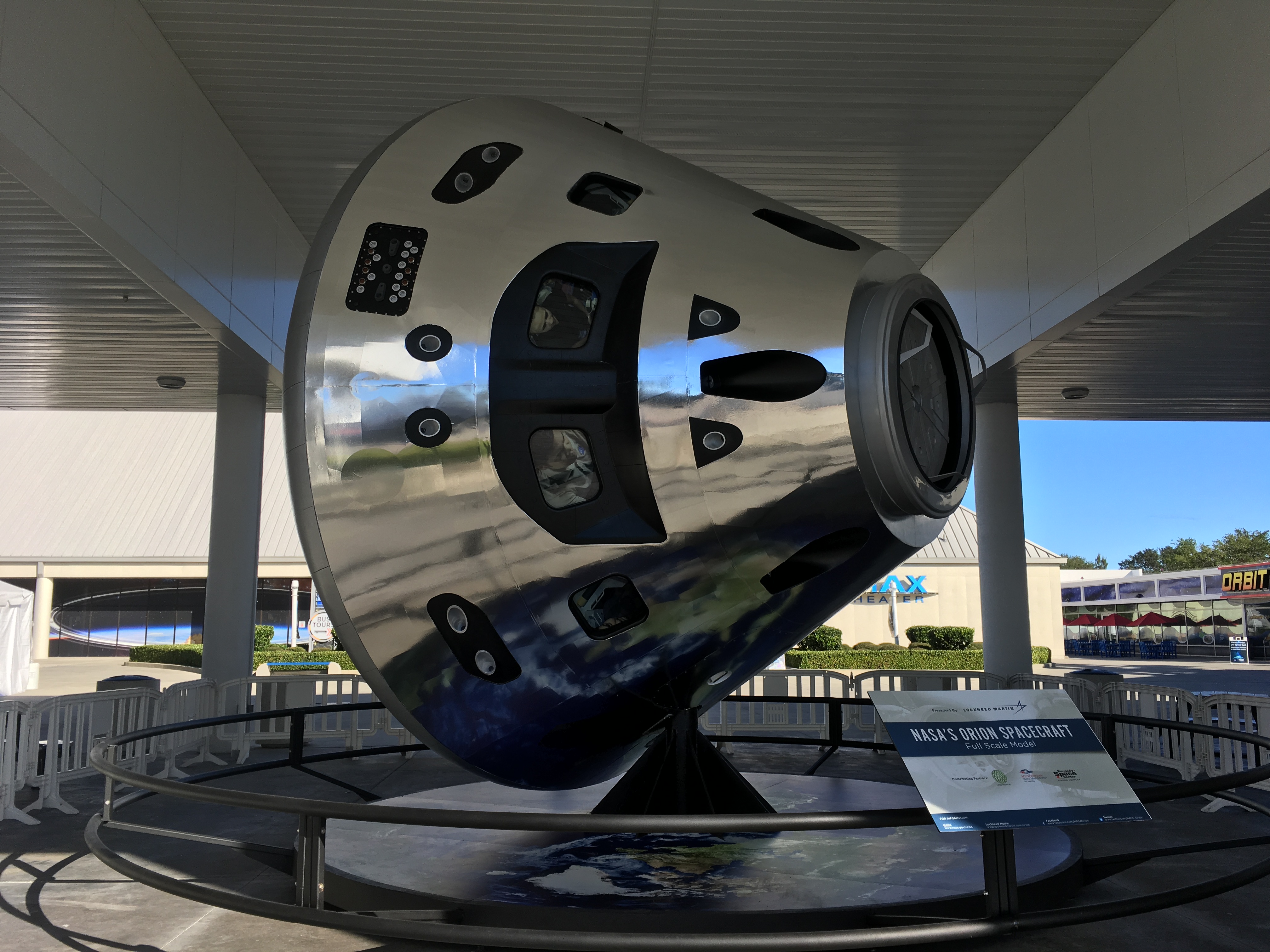
I didn’t want to miss the Astronaut talk. This time John-David Bartoe was there. Bio: http://www.jsc.nasa.gov/Bios/PS/bartoe.html
His talk, like many other astronaut talks, was very entertaining. He talked about his mission (STS-51F) but also about the ISS and the increasing number of female astronauts (yeah).
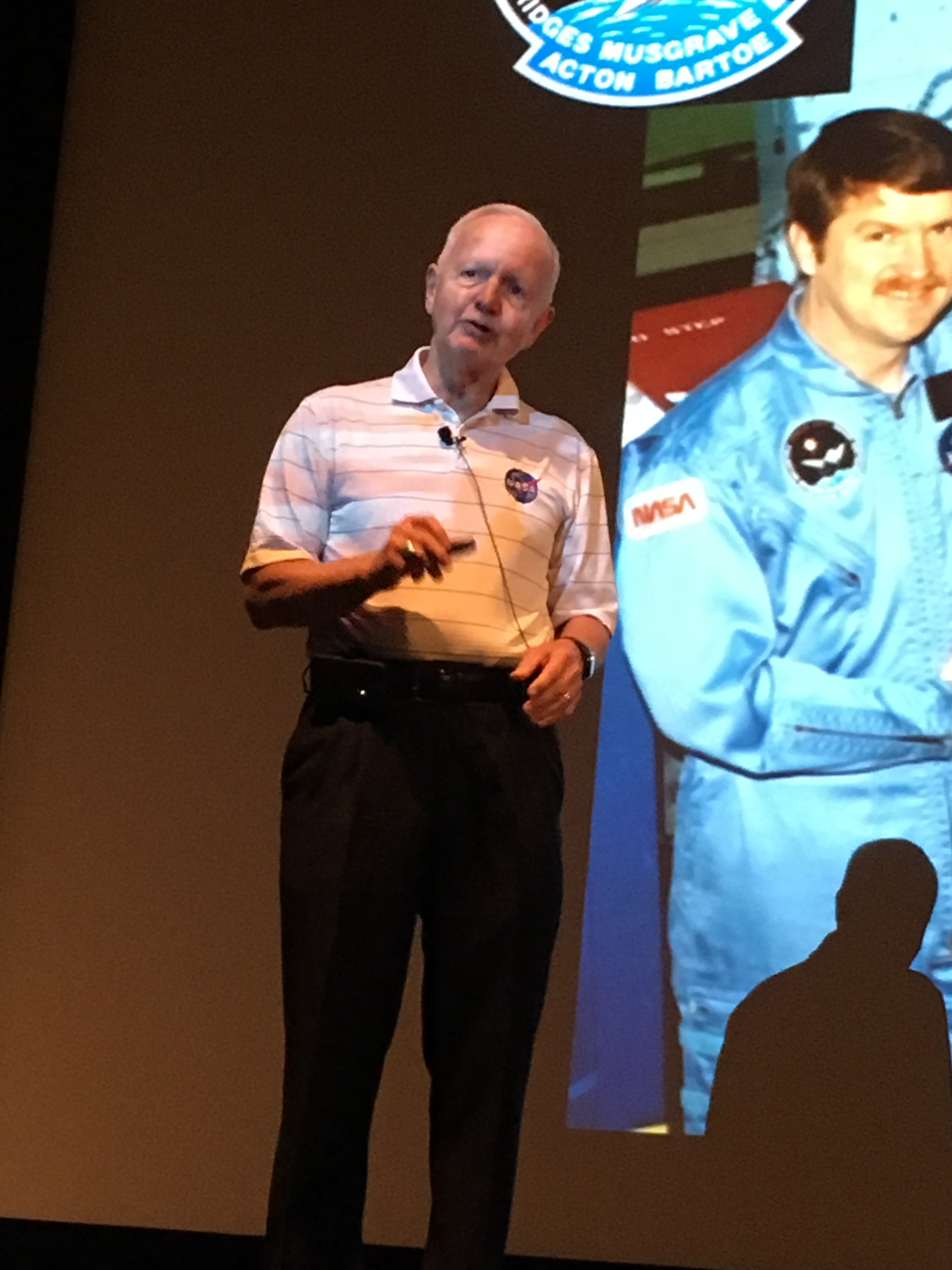
Next up was the Journey to Mars exhibition with my favorite rover (Opportunity or Spirit) and its big brother Curiosity.
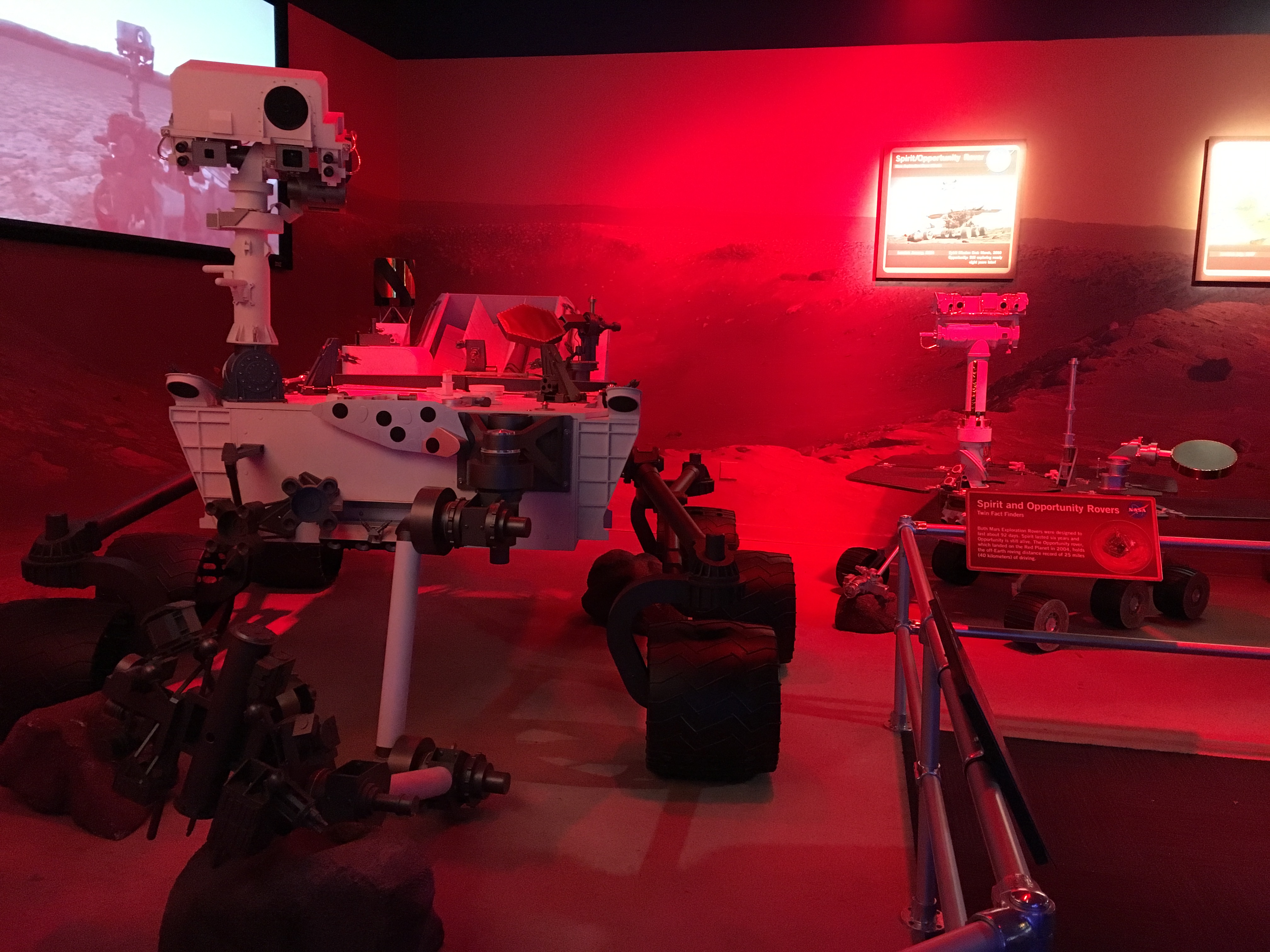
I love this view: a T-38 behind the Atlantis exhibition. The T-38 is used as a trainer for astronauts and as a chase plane.
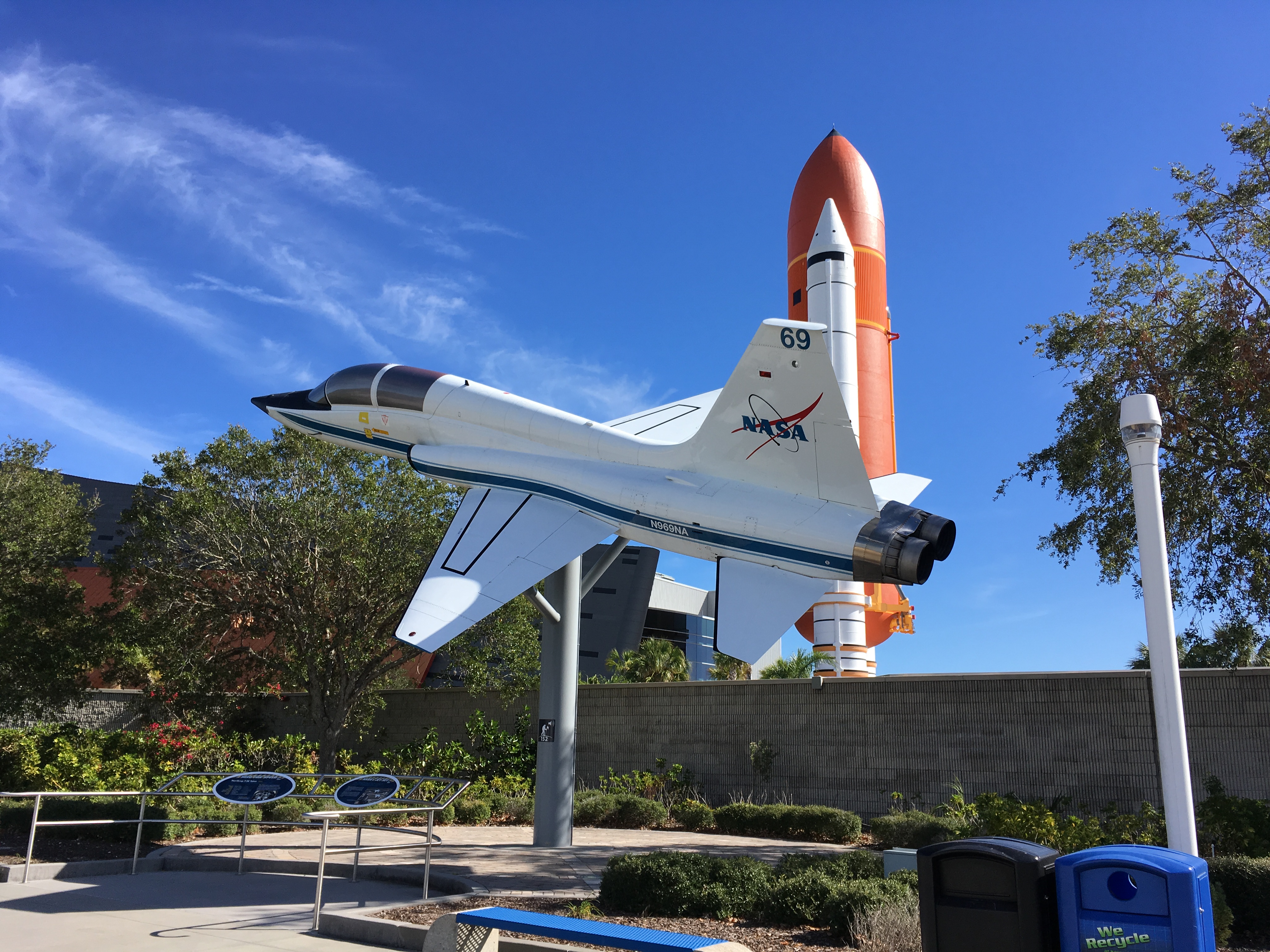
After a quick lunch and a visit to the Astronaut Memorial (Space Mirror Memorial) for the fallen astronauts during the American space program I went with a bus tour (the explore tour). Our guide was a young student who knew a lot about the most recent developments. First we went to the lookout point where you could see five launch pads, 39A and 39B, 41, 40 and 37B. Here you can see launch pads 41 and 40.
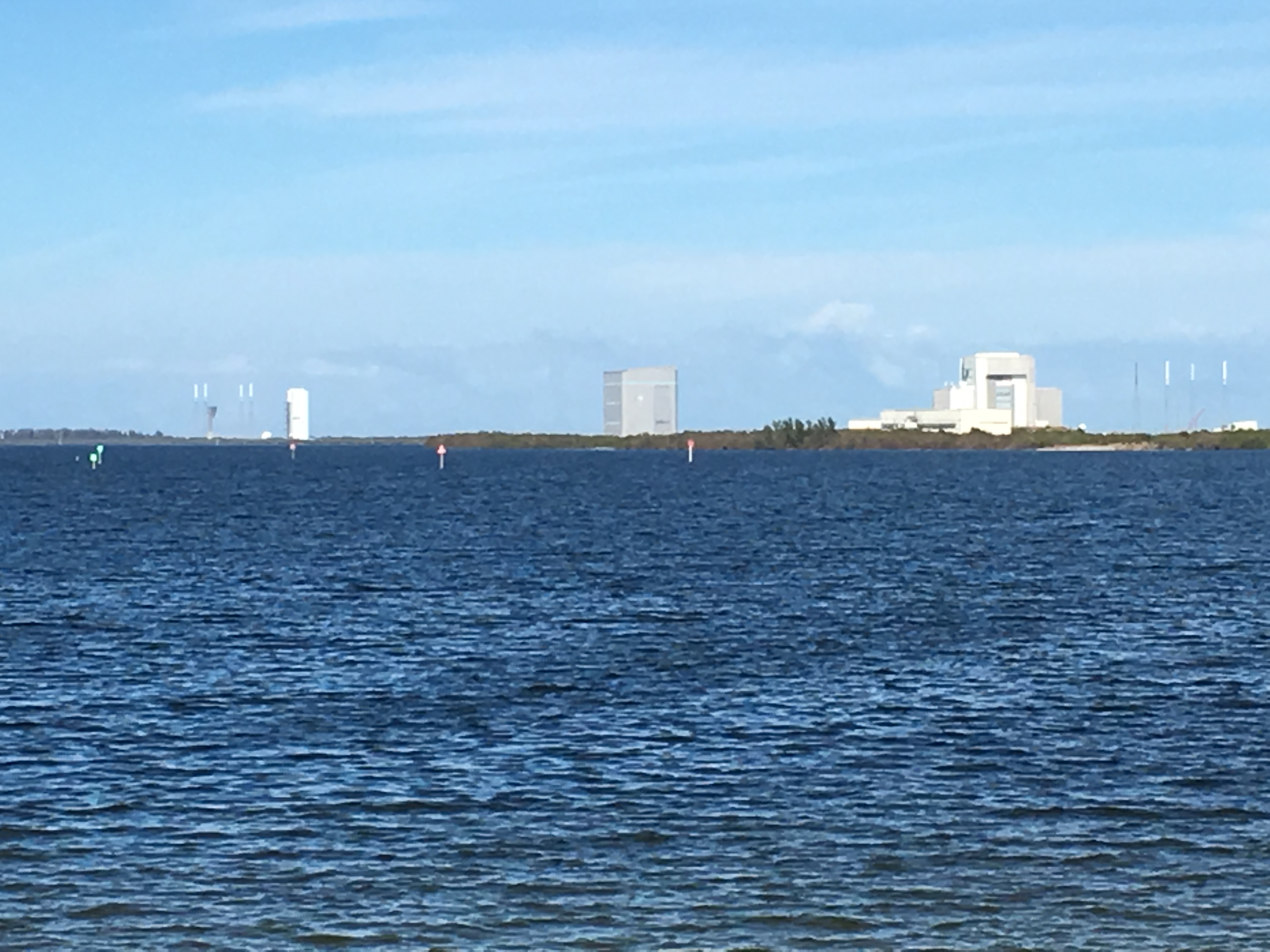
On launch pad 37B you could see the Delta IV rocket sheduled to launch on 7 December. The Air Force’s WGS 8 communications satellite was put into orbit on that day. Nice to be able to see it.

We also stopped at the lookout point for launchpads 39A and B. There were used for the Apollo and the space shuttle program as you can see below. This is launch pad 39A, which is leased by SpaceX for 20 years. It is modified for future SpaceX launches, the Falcon 9 and the Falcon Heavy rockets. In this photo you can still see the rotating support structure for the Space Shuttle. It will be removed for the SpaceX launches. It looked as if there was still a lot of work which had to be done to modify the launch pad.
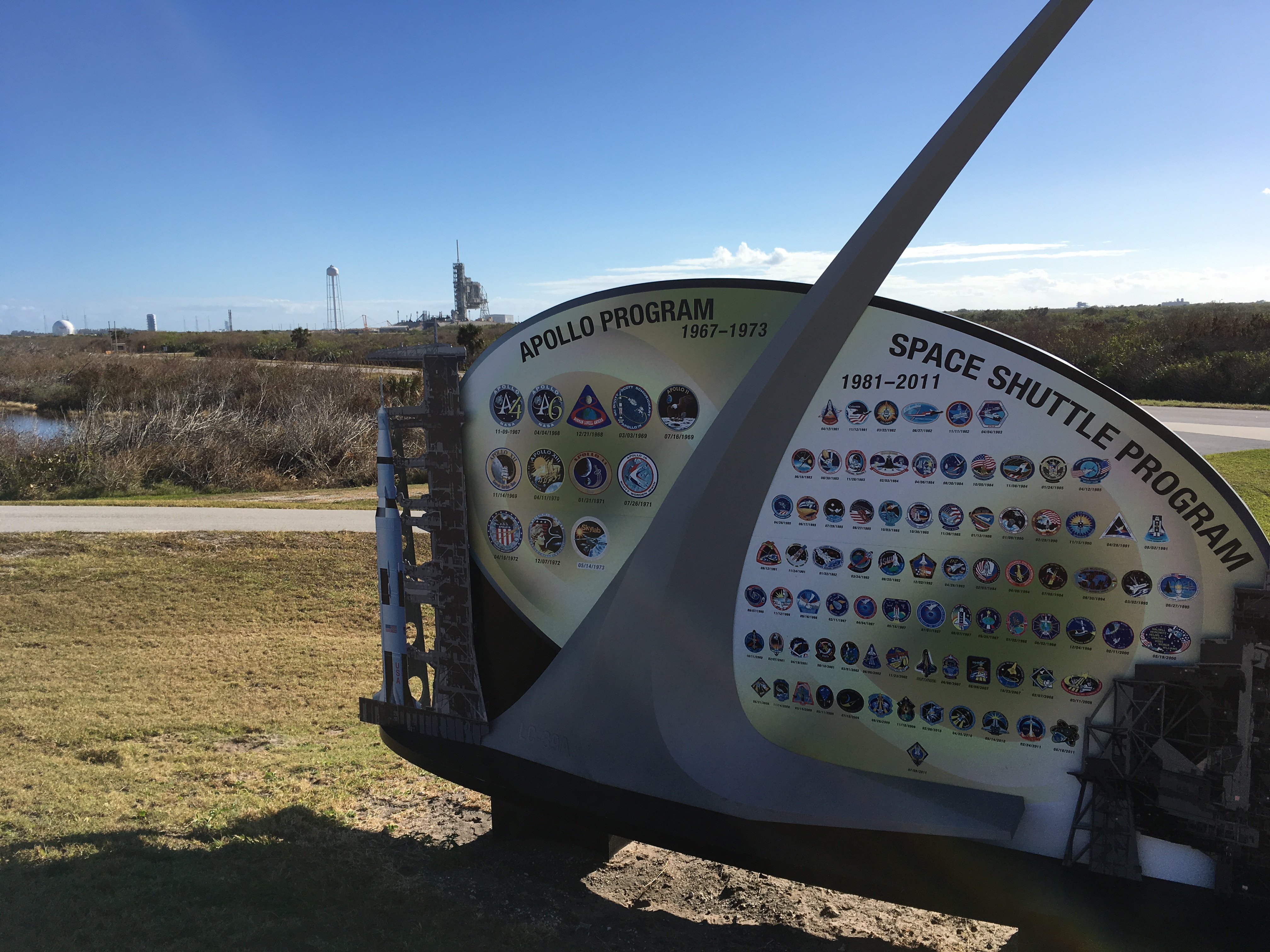
This is launch pad 39B. Launch pad 39B has been modified by NASA for future Space Launch System (SLS) launches.
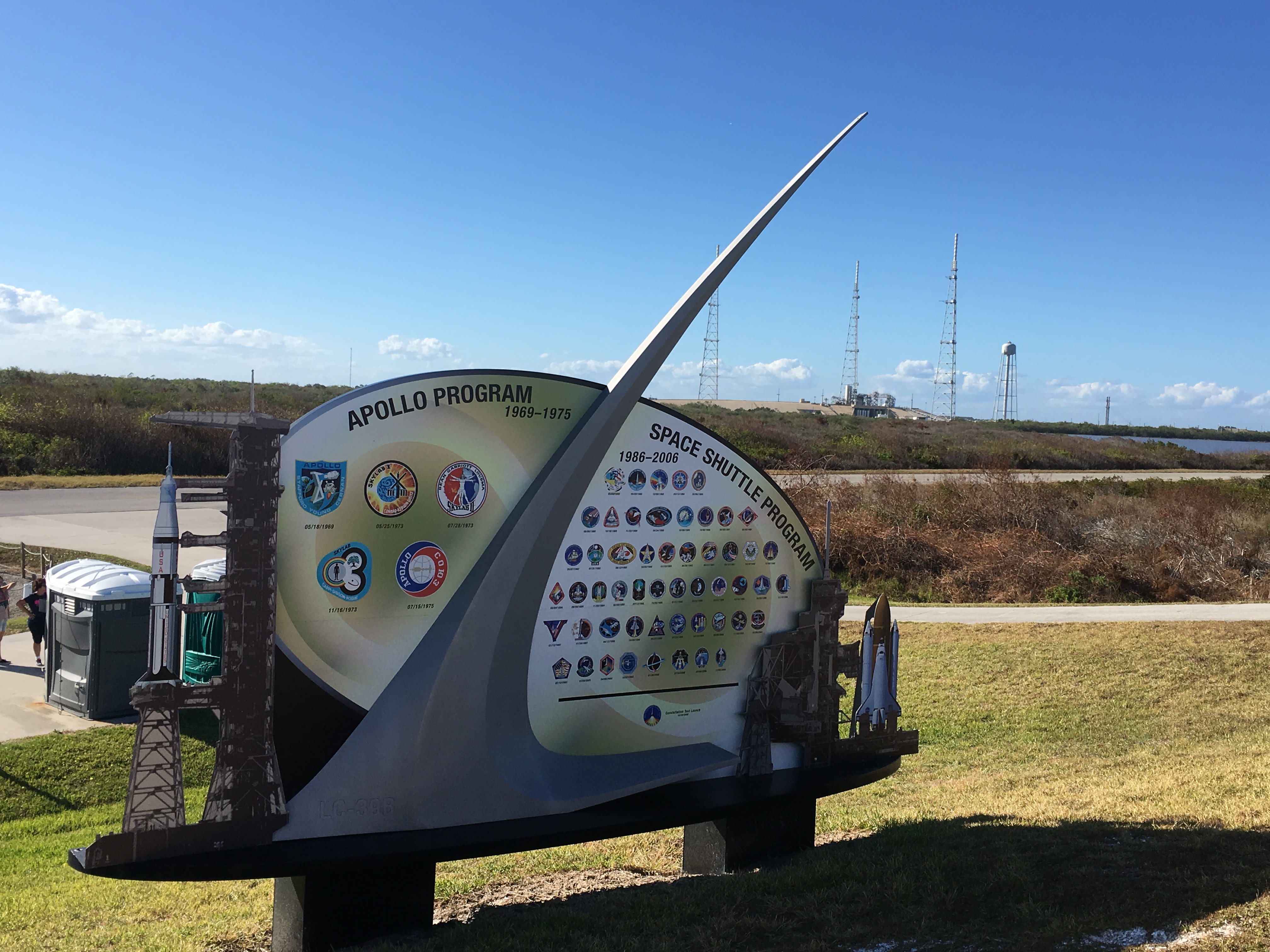
The water tank is a part of the Sound Suppression Water System (SSWS) which was added to protect the Space Shuttle and its payload from effects of the intense sound wave pressure generated by its engines.
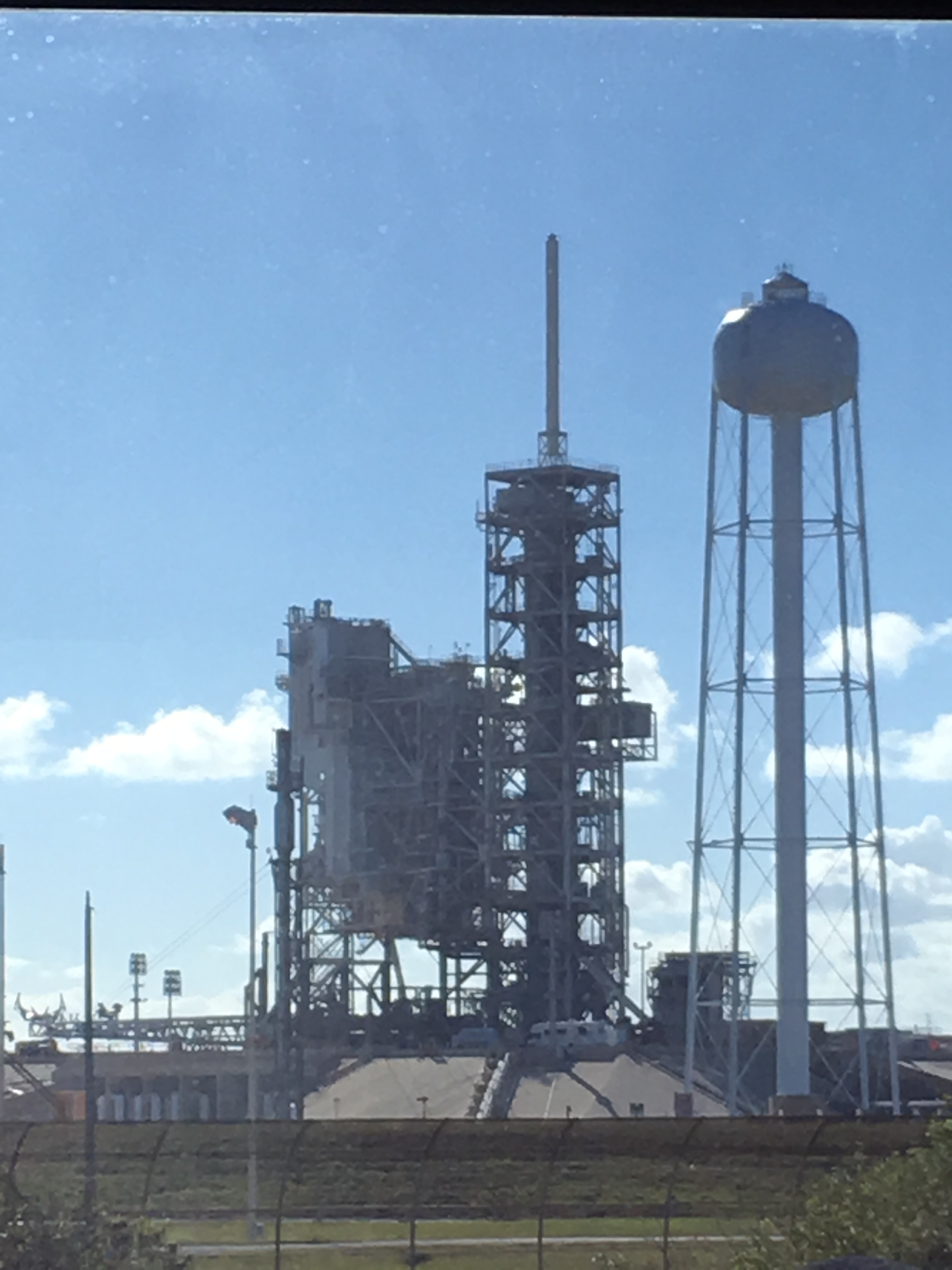
This mobile launcher has been modified with this launch tower.The launcher is designed to support the assembly, testing, check out and servicing of the rocket, as well as transfer it to the pad and provide the platform from which it will launch (from the NASA website). It’s much easier to launch from every launch pad this way so saving costs.
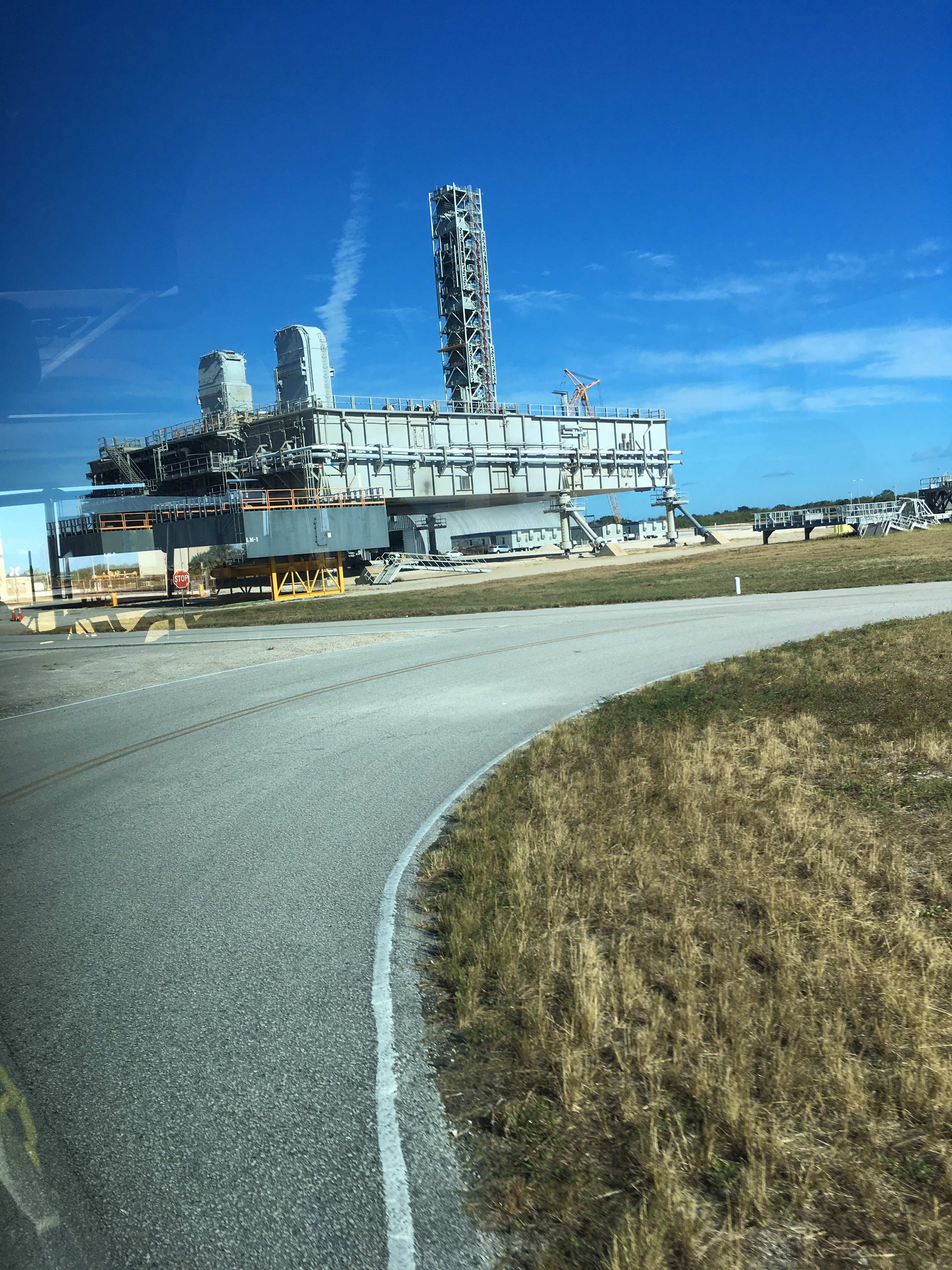
This is a crawler used to transport the space shuttles from the VAB to the launch pad. The maximum speed was 1.6 km/hour (1 mph) so taking a couple of hours (average 5) to reach the launch pad )total distance was 5.6 km).
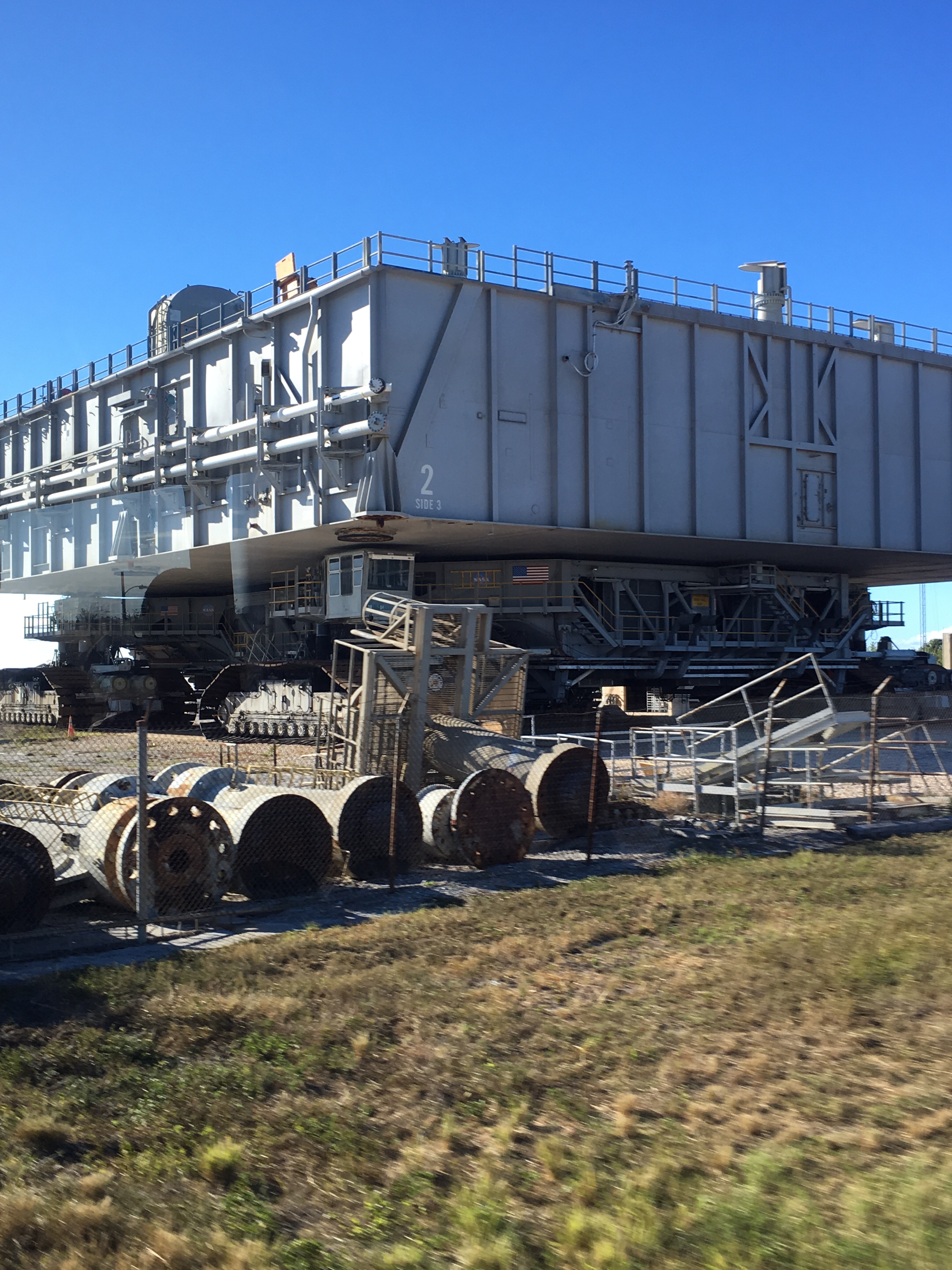
This is the Vehicle Assembly Building or VAB. It’s huge. The space shuttle fitted easily in this building. Now it’s modified for the new SLS.
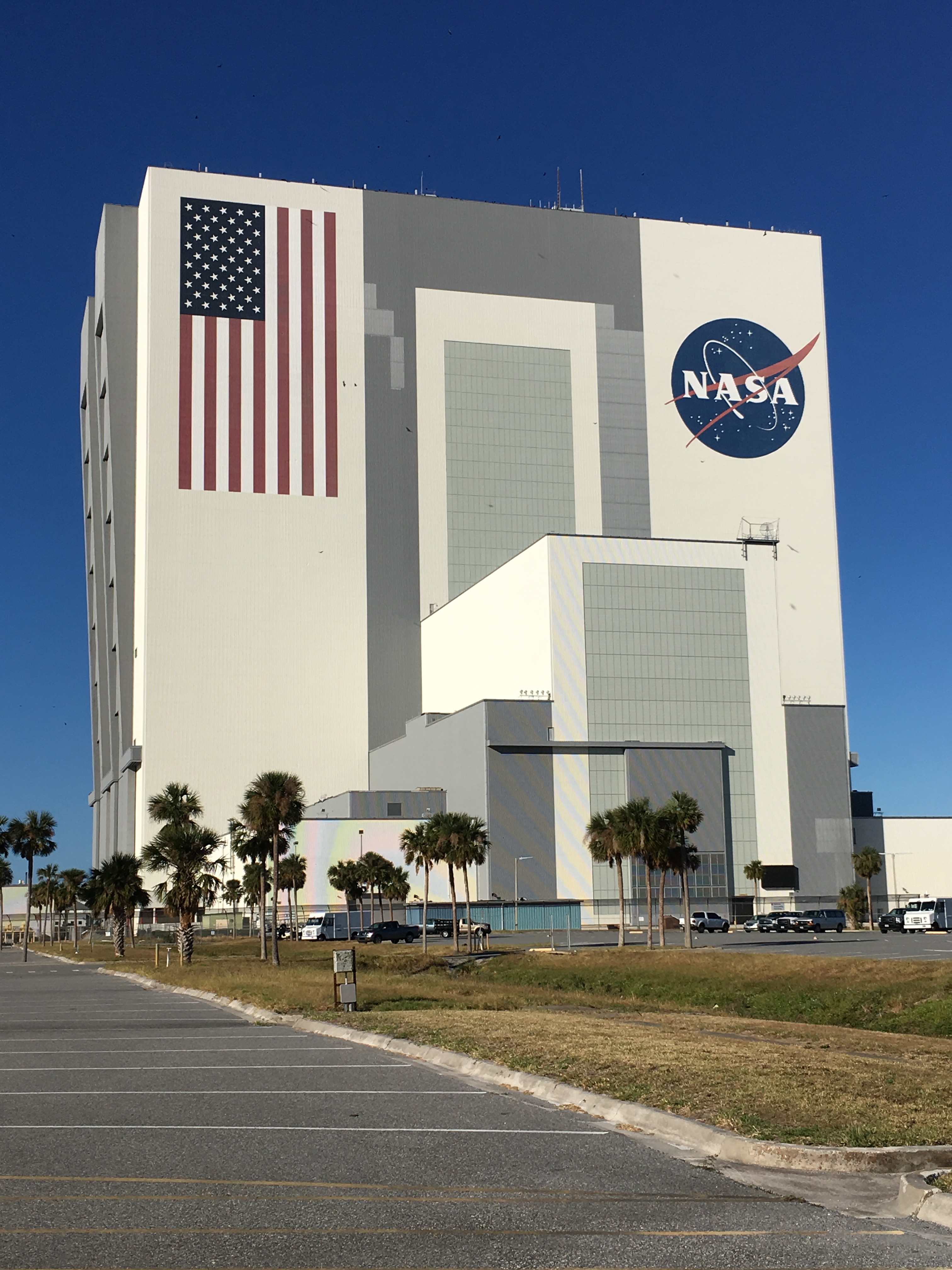
This is the space shuttle gantry. Sadly it was badly damaged during hurricane Matthew in October 2016.
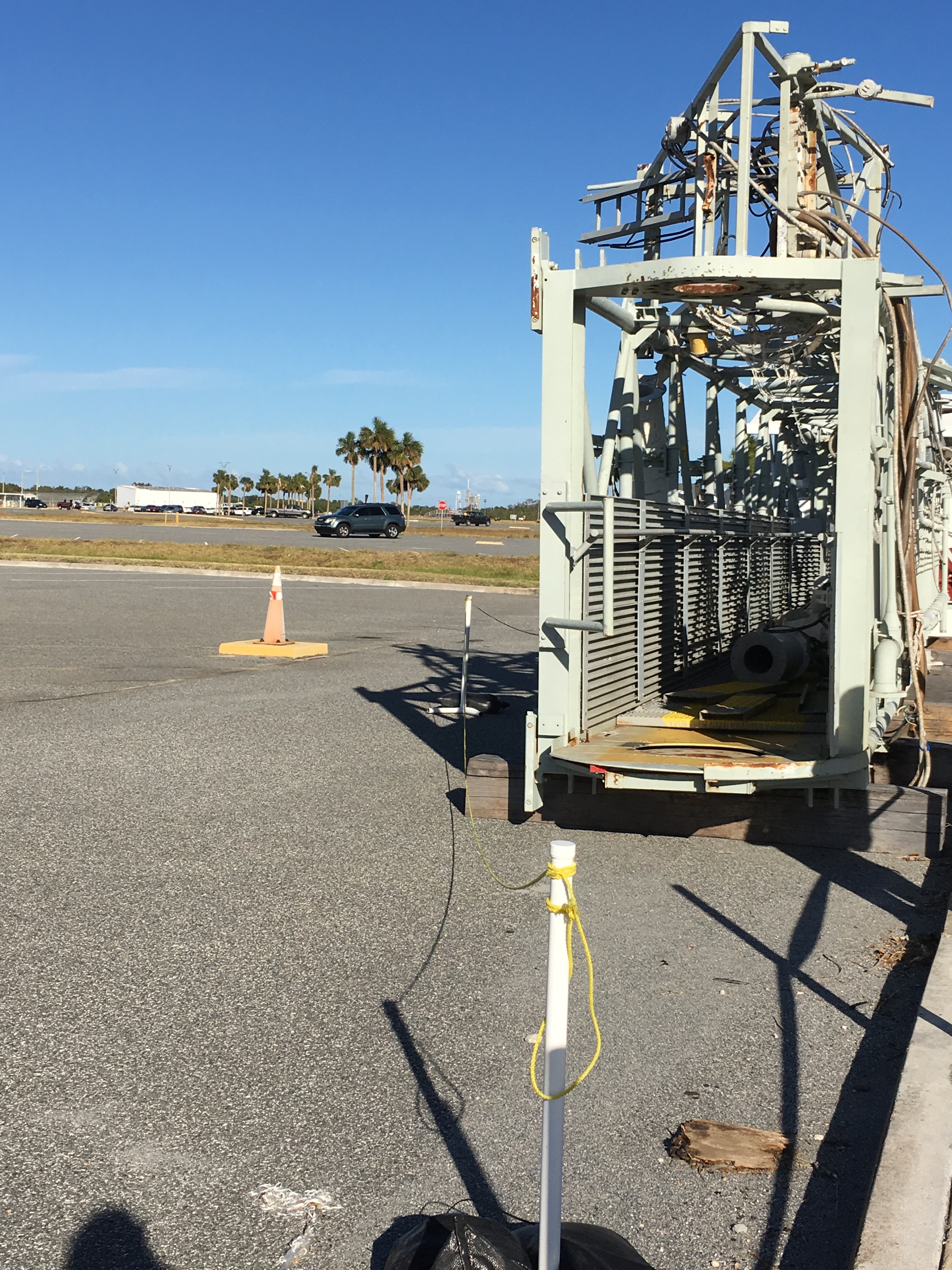
We were dropped at the Apollo/Saturn V Center. First you enter the firing room and you see the Apollo 8 launch. The first thing you see as you enter the huge exhibition hall is the Saturn V rocket used to go to the moon. It’s huge and very impressive. They have done a great job. The rocket’s first stage is a test stage and the second and third stages are from SA-514, which would have been used for the cancelled Apollo 19 mission.
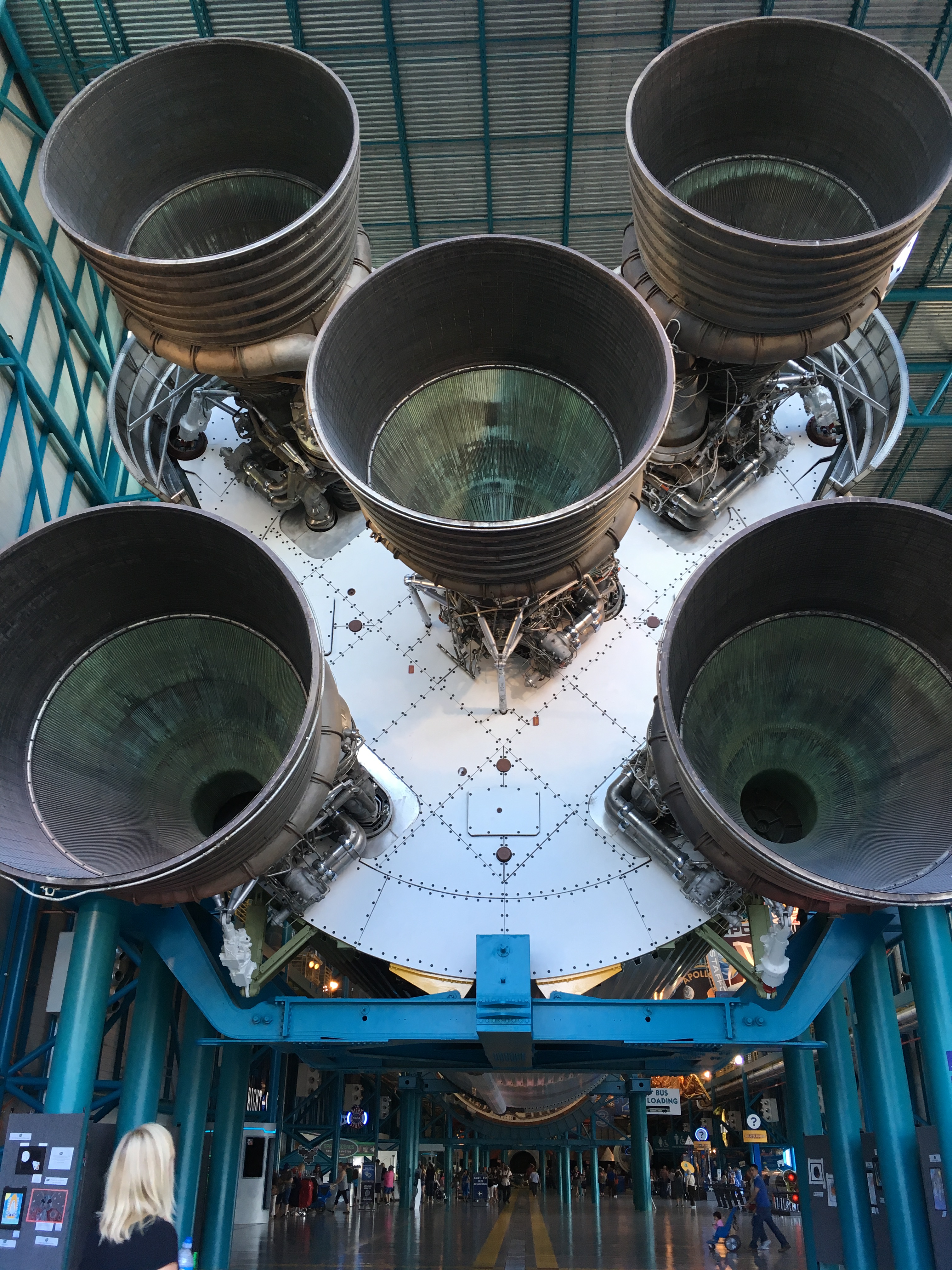
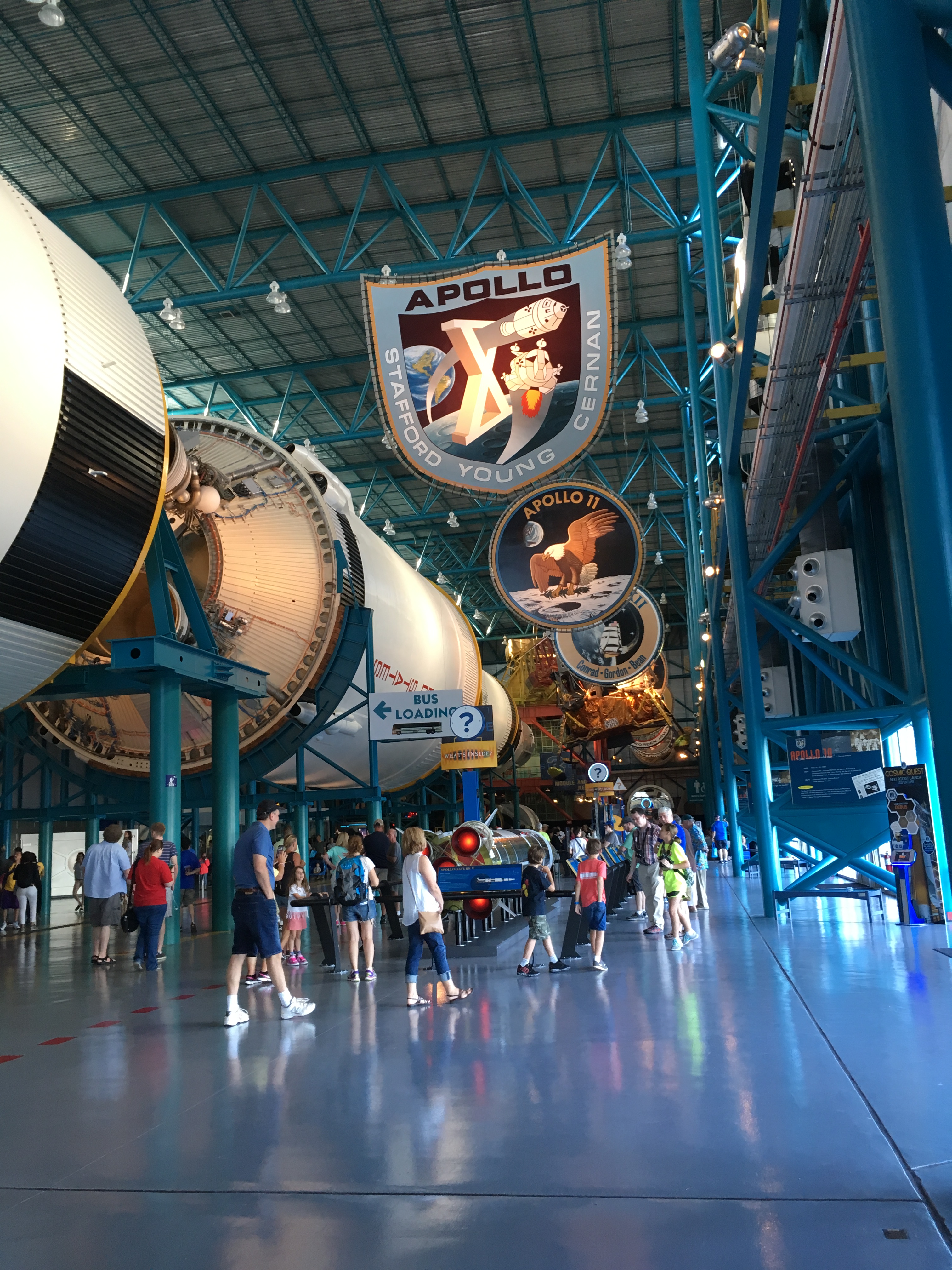
This is the astrovan of the Apollo program.
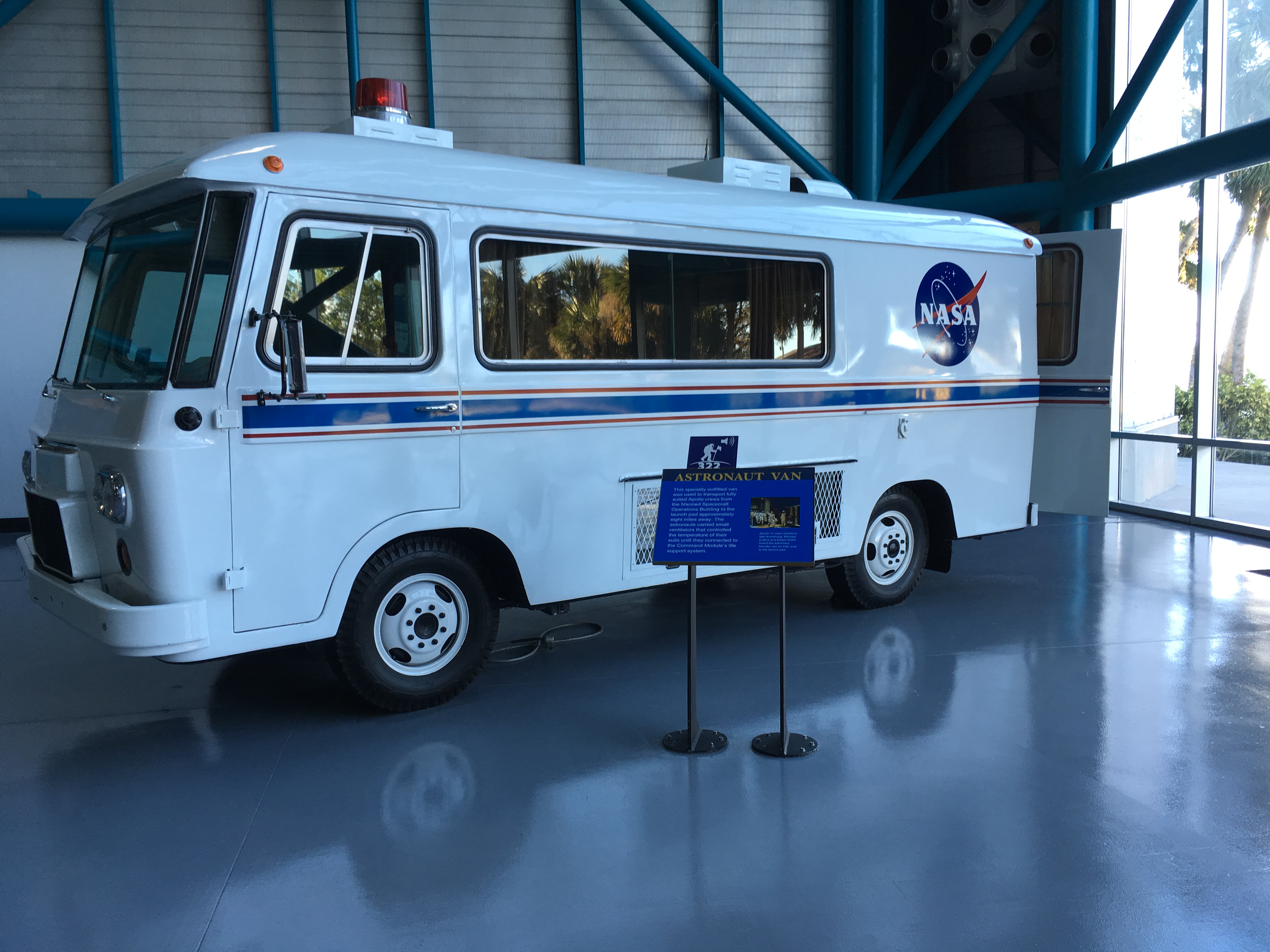
This is the official mascot of the Apollo program, Snoopy.
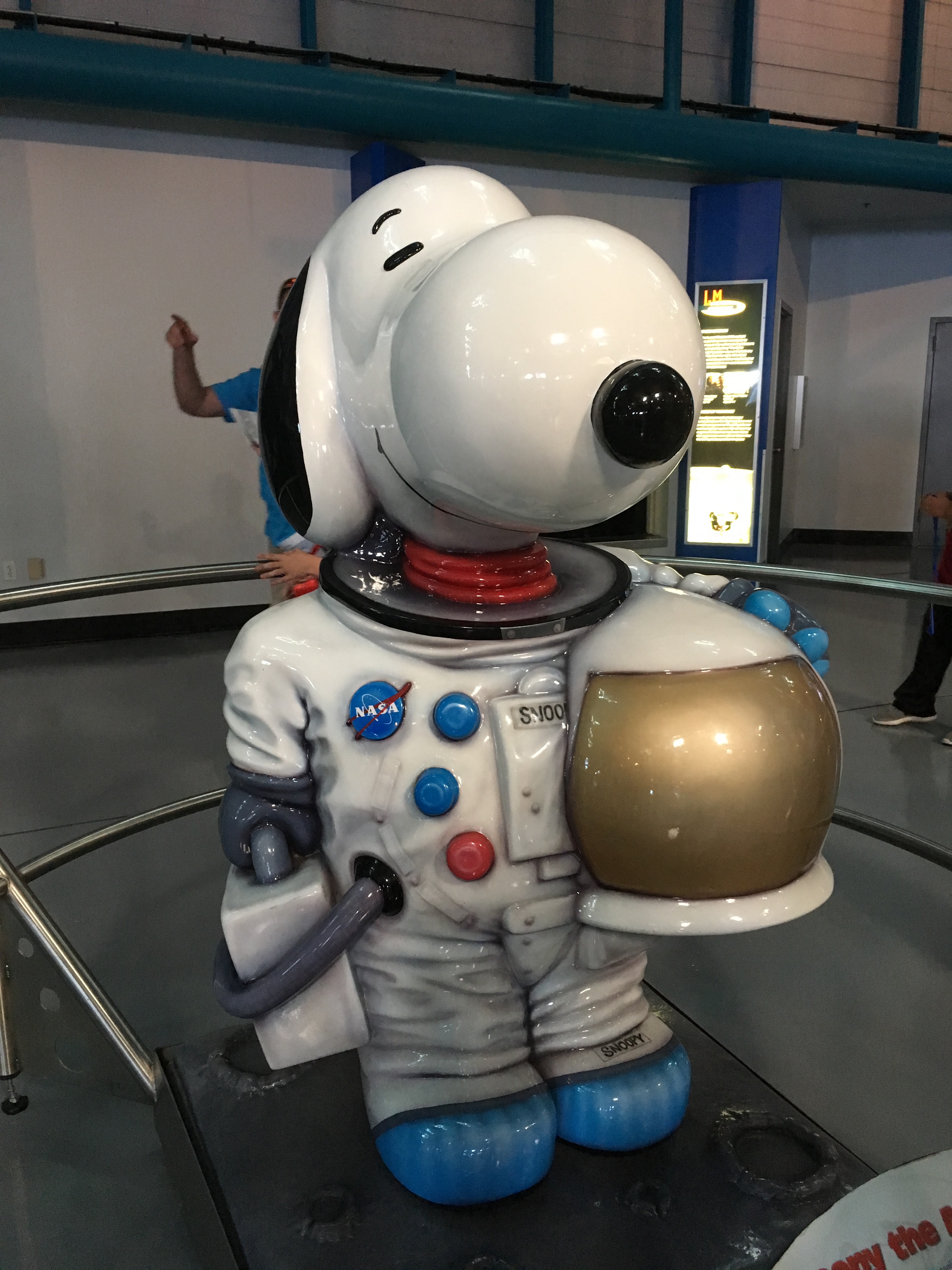
This is the spacesuit of Alan Shepard covered in moon dust!
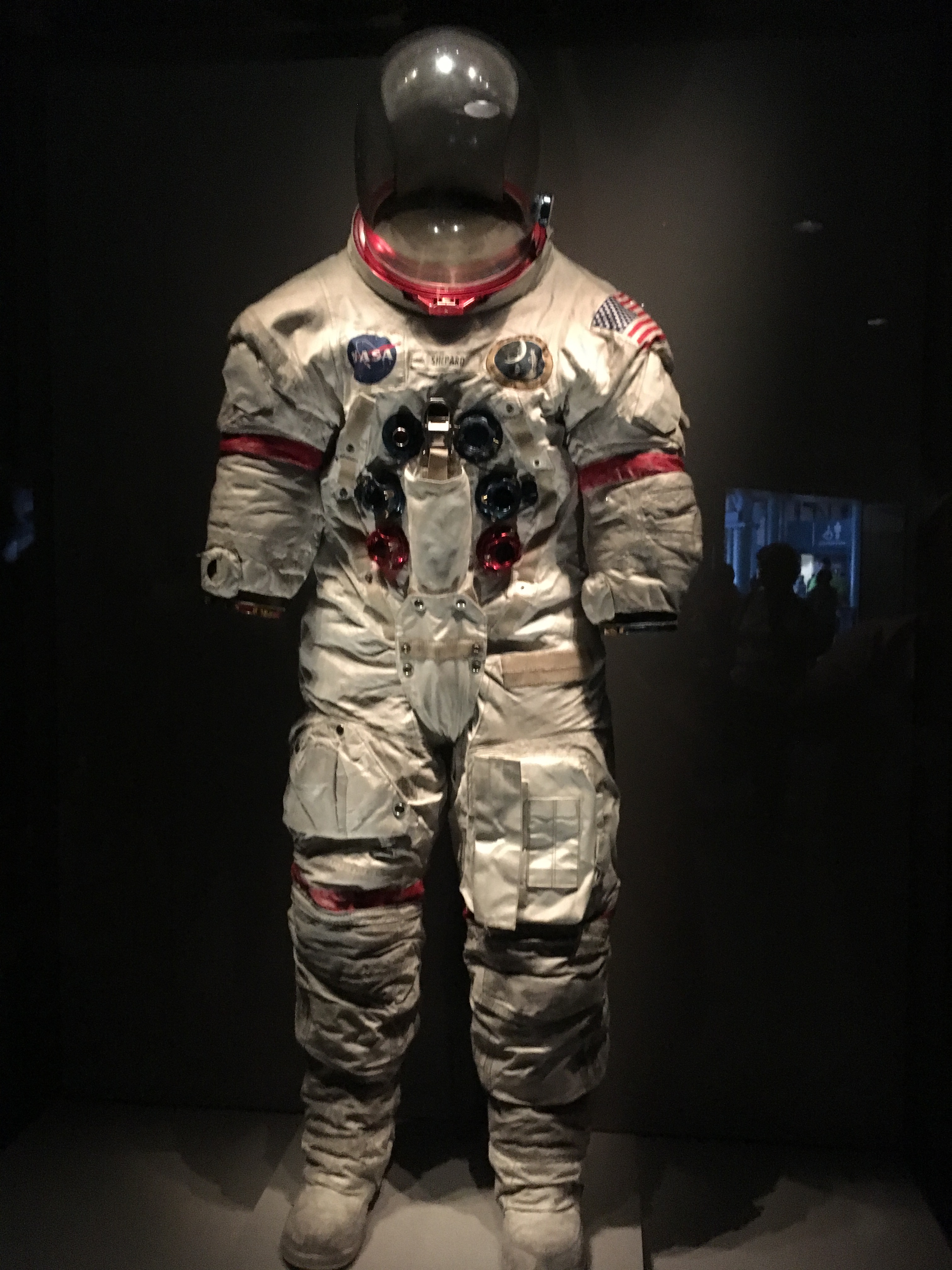
Apllo 14 Crew module showing the fierce reentry in Earth’s atmosphere.
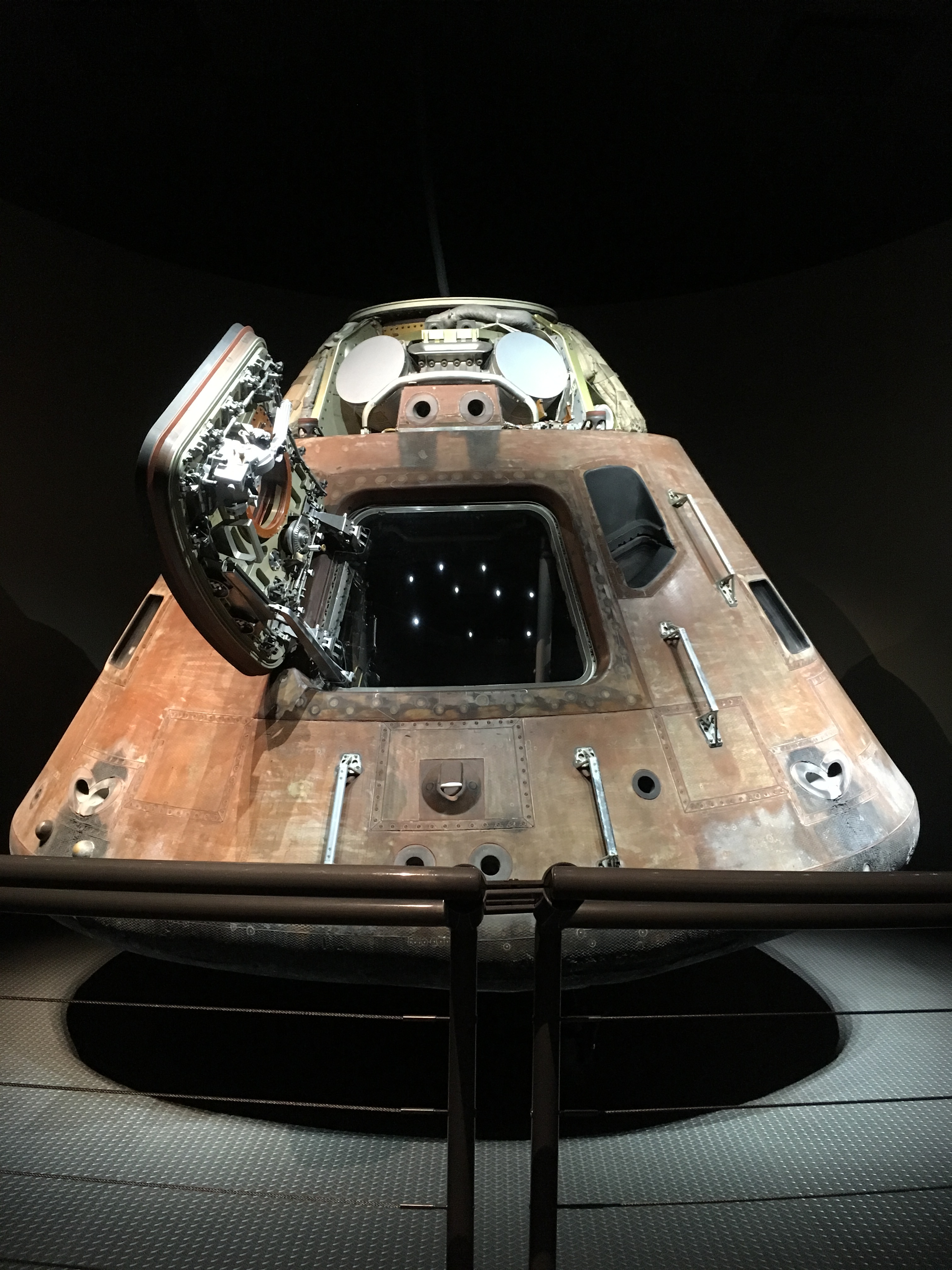
Practical and other info:
Once upon a time …. the members of the European Southern Observatory (ESO) decided to build a Very Large Telescope in Chile. It’sthe start of a great story.
There are 4 telescopes (Antu, Kueyen, Melipal and Yepun) who work together imaging astronomic phenomenons 25 times better than with the individual telescopes. They’re huge. The mirrors have a diameter of 8.2 m!!! The telescopes are situated in Chile, high in the mountains, with the clearest skies on our planet.
A lot of research is already done with the VLT. You may find more information on the ESO website, which contains a couple of very useful links (especially about the science with the telescopes). http://www.eso.org/public/teles-instr/vlt/
Tours are available under certain conditions: http://www.eso.org/public/about-eso/visitors/paranal/
Now I leave you with some of the most beautiful pictures of the VLT (credit ESO website)
